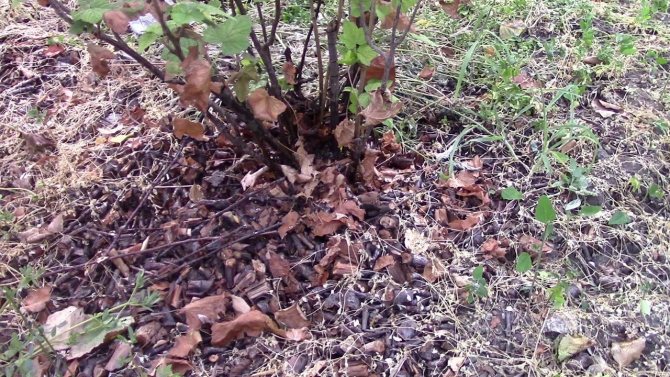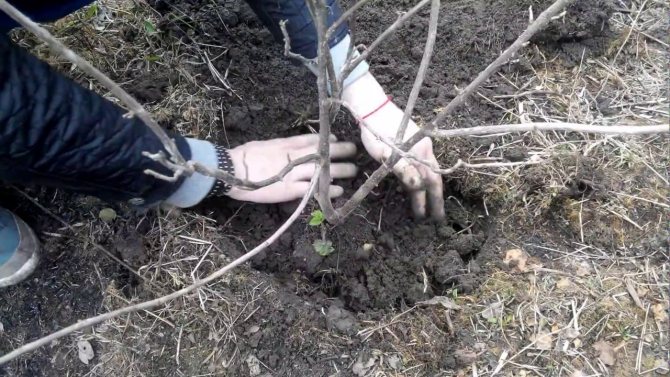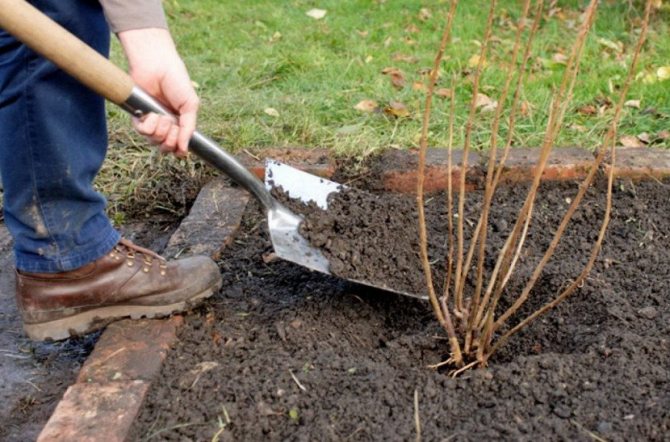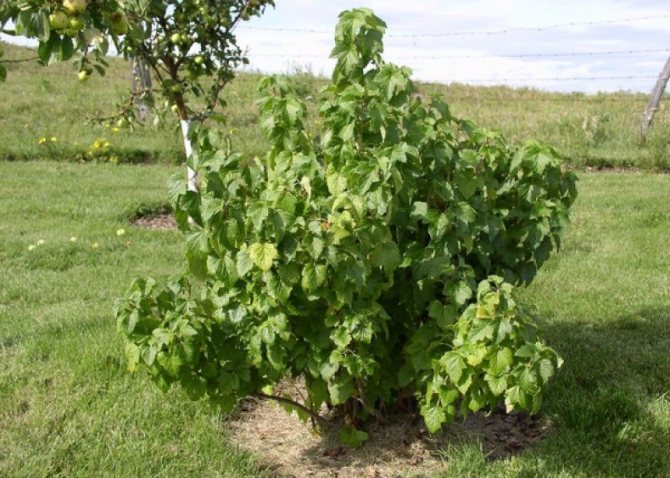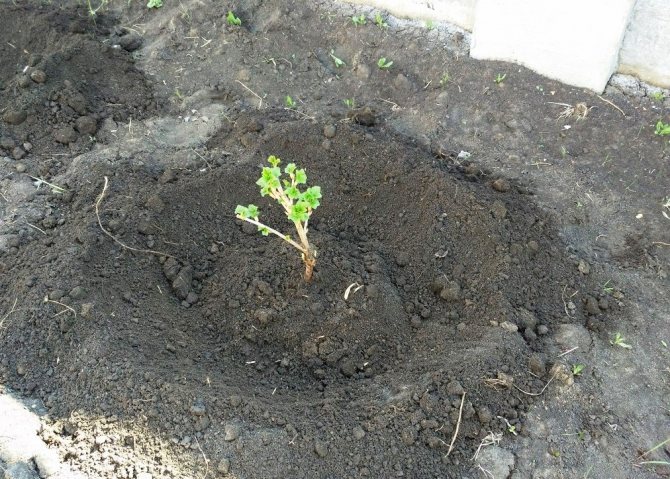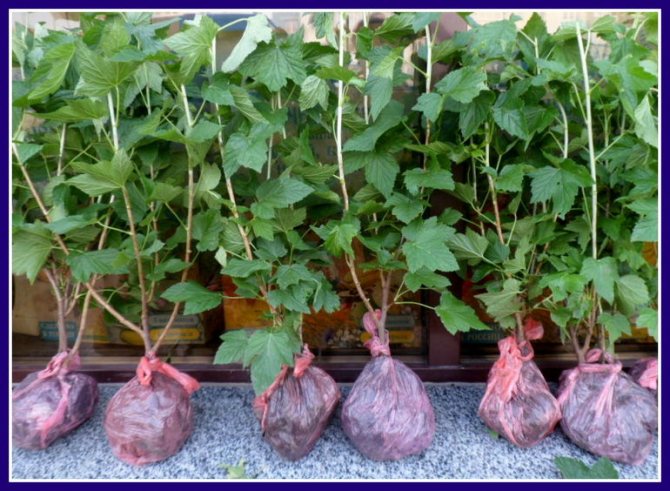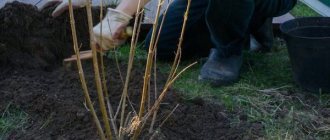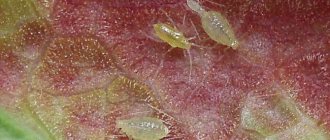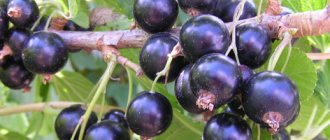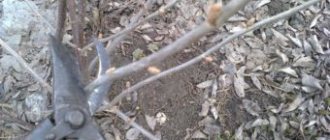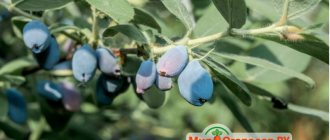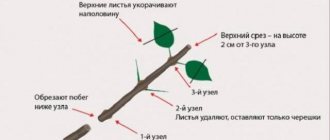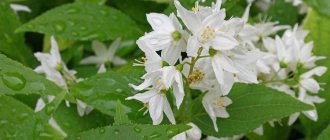Category: Fruit and berry plants
Black currant (Latin Ribes nigrum) - a species of the monotypic genus Currant of the Gooseberry family, which is a deciduous berry shrub. In the wild, black currant today grows throughout Europe, in the Urals, in Siberia to the Yenisei and Baikal, in Kazakhstan, Mongolia and China. It is also widespread in North America. In culture, it is grown throughout the world in amateur gardening and on an industrial scale. It appeared in Kievan Rus in the 10th century - they began to grow it in the monastery gardens, and only then did the black currant begin to conquer Europe.
Methods for propagating currants in autumn by cuttings
The first way
Reproduction green cuttings - This is a type of vegetative division of the bush, in which the shoot is separated from the mother plant, followed by transplantation to a new place.
Preparing a green cutting
This breeding process takes place in the following sequence:
- A mother bush is selected that is not affected by diseases, and the yield of this plant is the highest in this area.
- The shoot is cut off with a sharp knife at an angle of 45 °, the shoot should be no more than one year old. Such shoots do not bear fruit, have a greenish color, and bend easily. The shoot thickness should be at least 0.5 cm and no more than 0.8 cm.
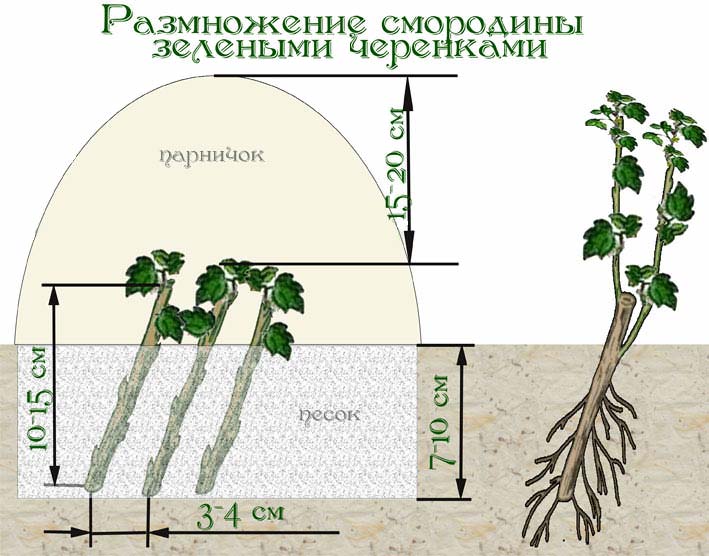
Cuttings with a length of 20 cm are cut from this shoot, while the first upper one is necessary, to make it a little longer, since not all the buds on it are still sufficiently ripe. Cuttings are also cut at an angle of 45 ° and must be treated with any growth activator.- Cuttings are planted in a row at an angle of 45 ° to a depth of 2-3 cm.The soil should be well fertilized and loosened, and the distance between future seedlings should be at least 20 cm.If there are too many cuttings and several rows are required, then the distance between the rows should be be 30-40 cm.
After the cuttings are planted, the entire area should be thoroughly watered. And during the first 2 weeks, this must be done regularly to prevent overdrying the soil.
Second way
Reproduction woody cuttings - this method is more effective than green cuttings. When propagating in this way, the survival rate is much higher, the non-lignified top of the shoot, in this case, is removed and is not used for planting.
The mother plant with such reproduction should be healthy and bring a good harvest, because the planting material taken in this way fully inherits all the characteristics and qualities of the donor plant.
When propagating a valuable variety of currants, or in the case when it is necessary to reproduce a bush with a limited amount of planting material, one-bud cuttings of lignified shoots are used. In this case, each shoot is cut into many small pieces containing only one bud.
The cut is also made at an angle and goes slightly above the kidney. Cuttings are planted in the same way as in standard propagation, but this procedure is carried out in a special nursery, which is covered with plastic wrap. The filling is carried out to a depth of no more than 2 cm.Thus, you can significantly save on planting material, while the survival rate of such plantings with this type of plant transplant is quite high.
Choosing the desired bush
The selection of a young seedling should be approached responsibly. Which bush to choose? There are several ways to get the desired plant variety:
- grafting from an old fruiting plant
- buying an annual bush the variety you like
- independent growing shoots from a grafted plant.
Of course, it is better to plant an already proven variety that has taken root well on the site. To do this, it is worth cutting off a young shoot from the old plant and planting it in a prepared place.
But if you need to buy a currant bush, then you should choose it according to several parameters:
- two or more escapes
- woody root, with a small amount of pile
- without external signs of disease
- no broken roots or trimmed parts.
Such a choice is guaranteed to give a good yield., rapid growth of the bush, disease resistance (at least at first).
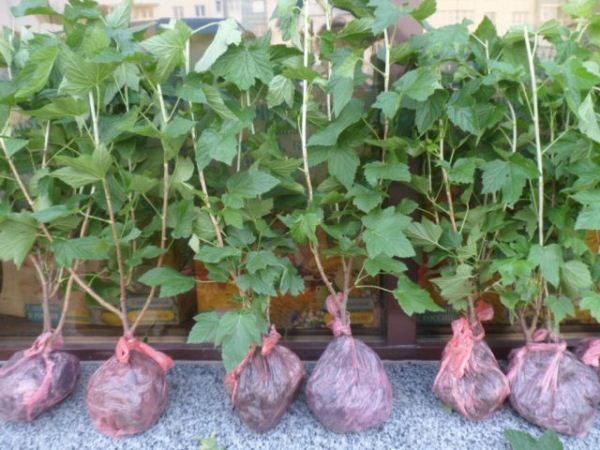

What should be currant seedlings
Often gardeners prefer to experiment themselves. therefore grafted to the main plant another variety... And then they take a shoot from such a vaccination to form a new young bush. This breeding method is also good. Only shoots should be taken from those plants that did not hurt, bear fruit perfectly. You can cut off the shoot after the currants begin to lose their leaves. This usually starts by mid-September..
Care of cuttings
The cuttings should be carefully looked after, avoiding waterlogging of the site or, conversely, the lack of moisture on it.
Rooted currant cuttings
Next spring they are needed spud to a height of no more than 5 cm... This must be done to cover the root system, which has just begun to form, but because of the temperature expansion of the soil in winter, the cuttings were slightly squeezed out of the soil.
The nursery should regularly loosen the soilto prevent the proliferation of weeds, which are not only competitors of the seedlings, but will shade the plantings, which will negatively affect the growth of the shoots.
In springtime, you should definitely feed the plantings with nitrogen and phosphorus fertilizers.
You can use both natural organic fertilizers and artificial mineral substances.
If the second option is used, then feeding is carried out simultaneously with watering the plant. Organic fertilizers are applied to the site at a rate of about 10 kg per 1 sq. m. Mineral only in dosages recommended by the manufacturer.
In the hot summer, it is necessary monitor soil moisture, and do not allow it to dry out. By this time, the root system is still underdeveloped and is not able to provide the plant with moisture from deeper soil layers.
Pests and diseases of black currant
As a result of mistakes made during planting or care, plants can be affected by such diseases:
| Name of the disease | Symptoms of defeat | Prevention and treatment |
| Septoria or white spot |
|
|
| Terry or reversion |
|
|
| Shoot and branch necrosis |
|
|
| Striped mosaic |
|
|
| Powdery mildew |
|
|
| Anthracnose |
|
|
| Gray rot |
|
|
| Rust |
|
|


Of the pests, the most dangerous for berry crops are:
| Name of the harmful insect | Symptoms of defeat | Prevention and treatment |
| Aphid |
|
|
| Sawfly |
|
|
| Moth |
|
|
| Leaf roll |
|
|
| Spider mite |
|
|
| Kidney mite |
|
|
| Fire |
|
|
| Glass-maker |
|
|
| Gallica |
|
|
Planting seedlings
By the fall of next year, seedlings will grow from the cuttings, which can be transplanted to a permanent place.
The area for growing currants should be well lit, protected from the wind, groundwater should be deep enough so that the root system of the shrub does not rot. Currant is a moisture-loving plant, but waterlogging of the soil will not benefit this shrub. If it is possible to choose a site on a small slope, then this will be an ideal option for planting seedlings.
Currant seedlings ready for planting
Before transplanting currants, the site is fertilized; for this purpose, up to 5 kg of organic matter per 1 sq. m of the plot where this shrub will be grown. Then you need to dig up the ground to a depth of at least 20 cm.
The pits for planting seedlings should have a cubic shape with a side of 40 cm. The seedling is placed vertically in such a hole, covered with earth and watered with warm water, then the plant is mulched with sawdust of non-coniferous trees.
The height of the seedling above ground level should be about 20 cm, so the stem must be cut at this distance from the ground, taking into account the fact that the cut should be slightly higher than the bud.
Pros of planting in the fall
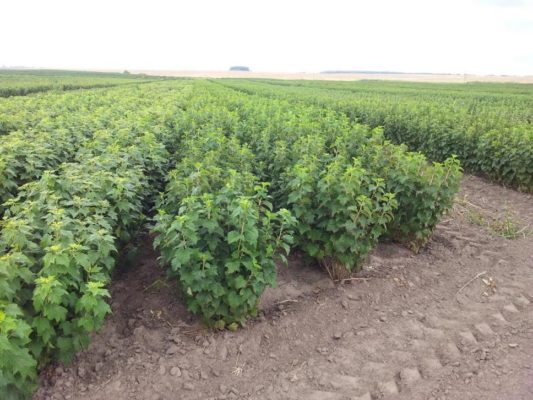

Planting healthy seedlings in the fall has undeniable advantages, which include:
- convenience of performing the event during the growing season;
- rich selection of planting material;
- almost one hundred percent survival rate;
- no need to make additional fertilizing with proper soil processing;
- the possibility of preserving an already beloved variety;
- no need for additional watering under favorable weather conditions.
Temperature conditions below + 10–12 ° C contribute to a completely natural deepening of the root system. This allows you to increase the immunity of the plant and make it more resistant to adverse external influences. It is also important to take into account the high risk of seedlings freezing in the snowless winter and severe damage to the root system by rodents. In that case, spring is a more productive time.
There are no tangible disadvantages in the autumn breeding of berry bushes, but only with strict adherence to all agrotechnical techniques and the timing of such planting, depending on the region of cultivation.
Preference should be given to zoned and frost-resistant varieties.
Terms for different regions: table
| Region | Timing | Auspicious days according to the lunar calendar-2019 |
| Ural | 26.08–10.09 | September 4-11, October 1-10, 31 |
| Siberia | 26.08–10.09 | |
| central Russia | 25.09–15.10 | |
| Moscow suburbs | 15.09–15.10 | |
| Southern regions | 10.10–20.10 | |
| Volga region | 01.10–20.10 |
Pros and cons of autumn breeding
Dignity autumn reproduction is that in the spring of next year the plant will release new buds and begin to intensively develop the root and vegetative mass. In addition, small plants go through the harsh winter conditions at the earliest stage of their life, which contributes to their resistance to various diseases and adverse environmental influences.
Among cons such a method - high risk of freezing cuttings, in the event that severe frosts "hit" earlier than planned. In this case, you can lose a large percentage of the planted cuttings.
Reproduction of currants in the fall can be applied to different varieties of this berry:
- For red currant the timing of cuttings should be postponed to the end of August, since this shrub must be well rooted in the soil before the onset of frost.
- For black-fruited varieties breeding can be done in early October.
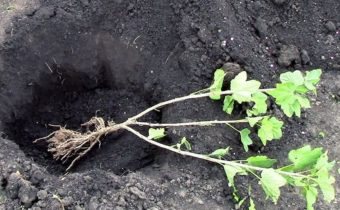

The currant bush lives on average 15 years and bears fruit most of its life. Over time, old plants need to be replaced with new bushes, and then there is a need to multiply the culture. Cuttings and seedlings are planted in the spring, but it is better to plant currants in the fall with seedlings and cuttings, when ideal conditions for survival are created.
Black currant pruning
When to cut black currants
We already wrote that it is best to carry out sanitary and formative pruning of black currants in the spring, at the end of March. But the problem is that the culture begins to grow very early, and pruning must be done before the buds swell. If you managed to meet the deadline in the spring, then in the fall, before the onset of the dormant period, carry out only sanitary pruning.
Pruning black currants in spring
As we already wrote, on newly planted seedlings, all branches are shortened, leaving no more than 2-3 buds on each.
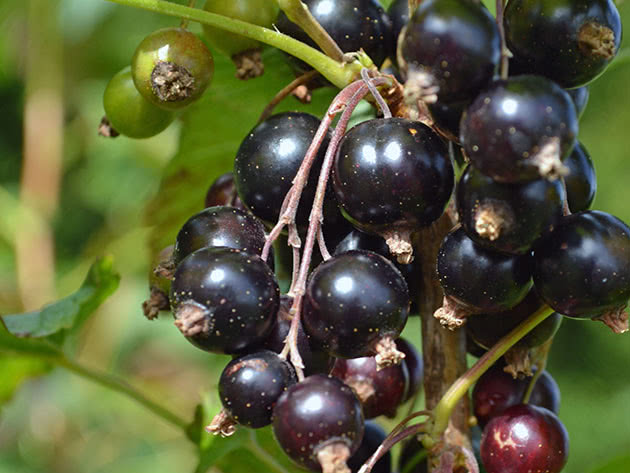

On the bushes of the second year of life, during spring pruning, from 3 to 5 of the most developed zero shoots are left - they will become the first skeletal branches of a currant bush. The rest of the shoots are removed. In the middle of summer, skeletal shoots are shortened by pinching into two buds - this manipulation contributes to the intensive formation of fruit branches and the growth of new zero shoots. Thus, the bush is formed correctly and the crop grows.
In the third and fourth years of life, from the growing zero shoots, from 3 to 6 of the most promising are left, and the rest are cut out. The tops of last year's shoots are shortened. On each branch of the skeletal branches, 2-4 buds are left. By the end of the fourth year, the black currant bush can be considered formed.
In the fifth and sixth years old branches appear on the black currant, and the bush needs rejuvenating pruning, in which five to six-year-old branches are cut off at the very surface. For the rest, when pruning, they adhere to the same scheme:
- the branches of the second, third and fourth years are shortened along all the branches, leaving no more than 4 buds at each end;
- the top of last year's shoots is shortened;
- from zero shoots of the current year, from 3 to 5 of the strongest and most developed are left, the rest are cut out.
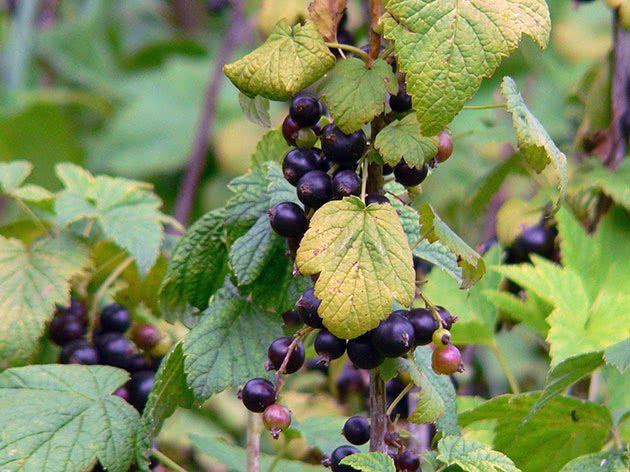

Pruning black currants in the fall
If you managed to carry out a full-fledged pruning in the spring, in the fall you will only have to cut out dry, broken, diseased and abnormally growing branches and shoots, that is, to carry out thinning and sanitary pruning. If you didn't manage to put the bush in order in the spring, do it in the fall, after all the leaves have fallen from the currant.
Dry branches can be removed from the bush at any time of the year. Pinching the tops is best in mid-July.
When to plant currants - in autumn or spring
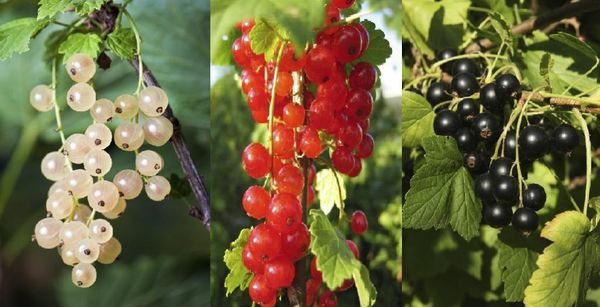

Red and black currants can be planted in spring and autumn, but the fall procedure has more advantages over spring planting. But, when we plant currants in the fall, we consciously take some risk. It is important to choose the right planting time so that the seedling or rooted stalk has time to take root and successfully overwinter.
Advantages inherent in planting currants in the fall:
- cuttings and seedlings take root quickly;
- there is a decrease in the activity of pests and pathogens;
- seedlings and cuttings go through the adaptation period well;
- in spring, there is a friendly awakening of vegetative buds and the regrowth of new shoots;
- there is a rapid spring growth of the vegetative mass and the formation of the crown.
However, it should be noted that such results can be achieved only when the planting technology is followed and proper post-plant care is carried out. The right choice of place for currants is also important. It must be lit and protected from cold winds.
Read also Rabbit liver cake recipe
It should also be remembered that cuttings and seedlings of white, black or red currants planted in autumn can freeze out during cold winter days. But this can be avoided if the autumn planting of currants is carried out in the best possible time, and then the young bushes are covered with insulating material for the winter.
Advantages of autumn planting of red and black currants
Of course, the fall planting is fraught with many risks. But on the other hand, it gives several advantages over spring sowing.:
- fast rooting
- no pests
- good adaptation to the ground
- friendly spring shoots
- active crown formation.


Autumn planting of currants promotes rapid rooting of the bush and good spring shoots
Such results will be only when the technology of planting plants in open ground and proper care after planting are observed. And most importantly - the choice of a suitable place. It should be covered with other shrubs or a fence on the windy side.
There is also a not very pleasant nuance for an autumn planting. it the likelihood of spoilage of young bushes of red, white and black currants during winter frosts... But such grief can be helped by covering the plants with a film for the winter.
Conditions required for landing
When planting currants in the fall, it is sometimes difficult to decide on which days to start the procedure. To a greater extent, you need to focus on the climatic conditions of the growing region.
For example, in the northern regions, Siberia and the Urals, planting work begins at the end of August. And in the Astrakhan region, planting of currant seedlings is carried out after October 15.
The main factor that determines the timing of planting is the weather.
- If planted later than the optimal time, then a quick drop in air temperature and frost will destroy the young bushes.
- If you hurry up and plant currant bushes earlier than recommended, new shoots will begin to grow on them, which themselves will die in winter from frost and significantly weaken the seedling. As a result, he will not be able to winter safely and will freeze out.
It turns out that you need to plant currants about 3 weeks before the onset of frost, so that the seedling has time to root well, but does not have time to release new shoots. All varieties of currants show high vitality and in order to ruin them when planting, you must try very hard.
It is also desirable that after disembarkation, within 20 days, the temperature does not drop below plus 5 degrees. During this time, the bush will have time to take root - otherwise it will freeze out.
Collection, storage and processing
Harvesting begins in July-August. Since the berries ripen unevenly in clusters, they are picked selectively and very carefully to avoid shedding.


The containers should not be very large - baskets up to 3 liters, boxes-trays up to 6 kg.
The berries are stored in the refrigerator for up to 5 weeks, in the freezer for up to 3 months without losing their beneficial properties. Currants are dried, they make jam, jam, juice, jelly, marshmallow, as well as alcoholic drinks and wine.
Tags: winter-hardy edible berries
Planting dates for currants in autumn
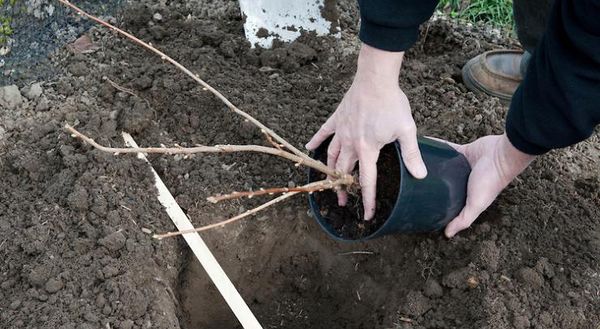

We have already noted that this culture is planted both in spring and autumn. If you have a need to plant seedlings in the spring, then master this procedure before the active movement of the plant sap begins. Dissolving buds indicate that you are already late with disembarkation.
It is much more convenient to land in the autumn. At this time and time for planting, much more is allowed than in spring, and the gardener does not observe a large load of other garden work. For September and October, you can correctly perform all pre-planting, planting work and with every right to count on success.
Lunar calendar
Many thousands of years ago, a connection was revealed between the state of the moon and its influence on gardening and horticultural work, including the planting of berry and fruit crops.
Over time, a lunar sowing calendar was compiled, which takes into account 2 main points: the phase of the moon and its position in the signs of the zodiac. It is these moments that determine what kind of work is allowed to be performed in the garden or vegetable garden on specific days of the calendar.
Favorable days for planting currants in the fall of 2019 are as follows:
- September - 1, 5-6. 18-19, 27-29;
- October - 2-3, 29-30;
- November - 25-26.
Absolutely not suitable days for planting work in the current year are the following days:
- September - 7.20-22, 25-26;
- October - 4-5, 17-19, 22-24, 31.
In these days of September and October, it is better not to start planting currants in a permanent place in the garden, no matter how suitable the weather conditions are.
Adhering to the recommendations of the Lunar calendar, you can plant currants on the best autumn days and then count on a good result.
Depending on the region
When choosing a planting day, the cultivation region and the prevailing weather conditions in it are of decisive importance.
It is known that it will take approximately 20 days for rooting in autumn for varieties belonging to the black variety and 25 days for seedlings belonging to the white and red varieties. It is becoming clear that all planting activities must be completed approximately 30 days before the onset of frosty weather.
Below are the approximate dates for planting currants in the fall by regions of the country:
- Ural and Siberia - August 26 - September 10;
- Moscow region - at the junction of September and October;
- Central Russia - from September 25 to October 15;
- Volga region - from 1 to 20 October;
- South of Russia - mid-October.
When planted in these terms, young plants have time to properly adapt to new conditions, take root and meet winter in a prepared state. On average in the country, the optimal month for planting currants is September.
Mainly, the grower must take into account the prevailing weather conditions.
If the weather is warm in the fall, then the planting dates can be safely moved by a week. This is necessary so that the bush, after rooting, does not begin to build up its vegetative mass, which will take a lot of nutrition. In addition, the green shoots that appeared in the fall will not have time to woody and freeze from frost.
If you have planned to carry out a spring planting, then this should be done when the soil on the site warms up sufficiently. Such conditions usually occur in late March or early April. By this time, the earth is already warming up, and the frosts are coming to naught. At this time, even abundant watering is not required for planting. And the bushes will root well and grow normally.
Black currant varieties
Today, more than two hundred varieties of black currant have been bred in the culture, and it is very difficult to find among them two or three exactly those that you need. We will try to divide the varieties into groups, in accordance with the requests of our readers, so that it is easier for you to make your choice.
Large varieties of black currant
Large-fruited varieties of black currants are those whose berries exceed 1.5 g by weight. The most famous varieties of large-fruited currants are:
- Vigorous - black currant of this variety has fruits weighing up to 8 g. The skin of the fruit is dense, the pulp is fleshy, sweet, juicy. The ripening period is medium late - in the third decade of July. The disadvantage of the variety is that it reproduces poorly, is not resistant to powdery mildew, and needs to be rejuvenated often;
- Dobrynya - large black currant, the weight of the berries of which reaches 7 g. The average ripening period is the second half of July. Dobrynya is distinguished by winter hardiness, early maturity and resistance to powdery mildew;
- Selechenskaya-2 - a fruitful, winter-hardy and resistant to powdery mildew early ripening variety with berries weighing up to 6 g of sweet-sour taste.
In addition to those described, large-fruited varieties Chereshnevaya, Large Litvinova, Comfort, Sanuta, Krasa Lvova have proven themselves well.
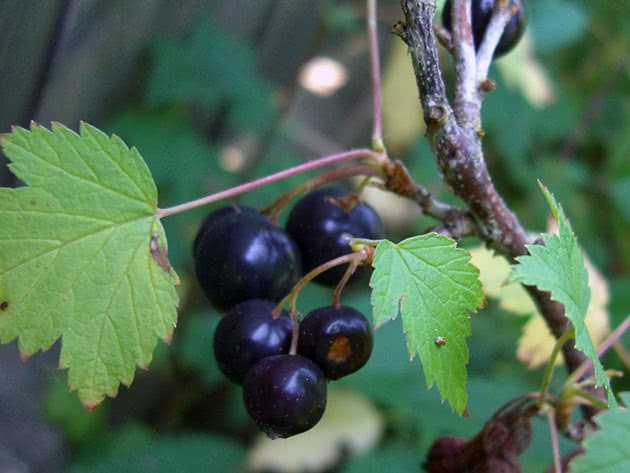

Sweet varieties of black currant
The sweetest varieties of black currant are:
- Nina - stably productive, winter-hardy, self-fertile and sweet black currant of early ripening, resistant to powdery mildew, with large berries up to 13 mm in diameter. Unfortunately, the variety is not resistant to terry and kidney mites;
- Bagheera - resistant to environmental changes, early-growing and winter-hardy variety with large sweet berries almost completely free of acid, characterized by good gelling. The disadvantage of the variety is the instability to pests and diseases - anthracnose, powdery mildew and kidney mites;
- Green haze - a fast-growing, winter-hardy and high-yielding medium-ripening variety with aromatic sweet berries.The variety is affected by kidney mites.
Sweet varieties are also Izumnaya, Otlichnitsa, Perun and Dobrynya.
Early varieties of black currant
Early ripening blackcurrant varieties ripen in early July, and since harvesting from these bushes ends before the onset of heat, they are not afraid of most of the diseases and pests from which later varieties suffer. Early currants are represented by the following varieties:
- Dove seedling - a very early variety with small berries weighing from 1 g to 1.5 g, which crack when overripe;
- Little Prince - self-fertile and early fruitful variety, giving from a bush up to 6 kg of juicy, almost black berries with a sweet and sour taste;
- Curiosity - winter-hardy, self-fertile fruitful variety, poorly tolerant of drought, but resistant to powdery mildew. The berries are oval, medium in size, with a dense skin, sweet and sour.
Such early ripening varieties as Exotic, Otradnaya, Old Man Minai, Overture, Izyumnaya, Dachnitsa, Mriya Kievskaya, Heiress, Sevchanka, Golubichka, Nika, Sibylla and others have proven themselves well.
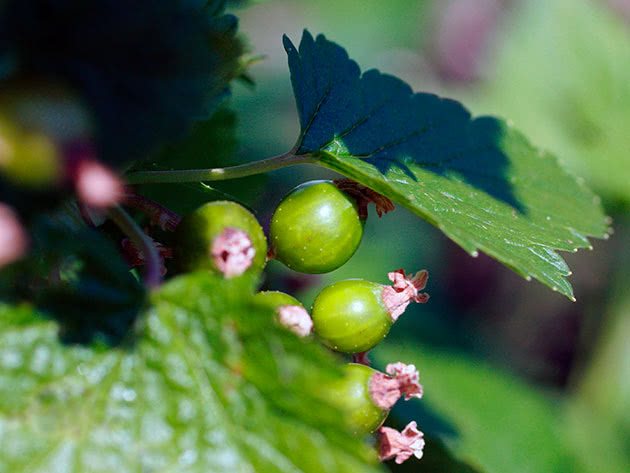

Medium black currant varieties
Mid-ripening black currant yields a harvest from mid-July. Of the most famous varieties of medium ripening, you can name the following:
- Titania - a variety resistant to powdery mildew with berries of various sizes, sweet and sour taste, strong skin and greenish flesh. The berries do not ripen at the same time, so the harvest may take a long time;
- Black Pearl - consistently productive, self-fertile and very frost-resistant universal variety with one-dimensional berries weighing up to 1.5 g. The variety is not resistant to powdery mildew;
- Bolero - self-fertile, early-growing, high-yielding and frost-resistant variety, resistant to anthracnose and powdery mildew, with large, aromatic oval or round berries weighing up to 2.5 g sweet and sour taste.
The medium-ripening varieties Azhurnaya, Delikates, Odezhbin, Dubrovskaya, Pigmey, Vernosti, Zagadka, Ozherelye, Orlovia and others have also proven themselves well.
Late varieties of black currant
Late blackcurrant varieties include those that ripen in August. It is the berries of late-ripening varieties that are best kept frozen and processed. The most famous varieties:
- Vologda - a high-yielding, large-fruited, disease-resistant variety with high self-fertility and winter hardiness, but damaged during spring frosts. Berries are sweet and sour, large, with a dry separation, weighing up to 2.2 g;
- Daughter - a high-yielding self-fertile and drought-resistant variety for universal use, resistant to kidney mites. Berries with a dry separation, large, sweet and sour taste, weighing up to 2.5 g;
- Lazy person - self-fertile, winter-hardy, resistant to terry and anthracnose variety with round berries of large size and sweet taste. The disadvantages of the variety can be considered a prolonged ripening of fruits and an unstable yield.
The varieties Venus, Natasha, Rusalka, Katyusha, Kipiana and others are also popular.
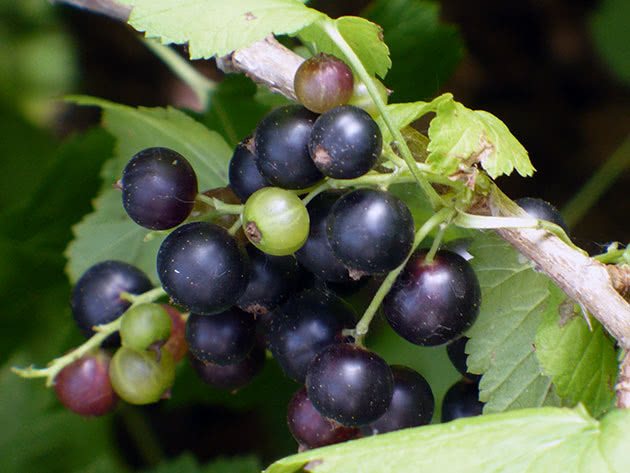

The best varieties of black currant
The highest marks for taste - above 4.5 points - are given to varieties of black currant, which are considered dessert. The best black currants - varieties Selechenskaya, Selechenskaya-2, Venus, Nadia, Centaur, Perun, Pygmy, Orlov waltz, Slastena, Tisel, Nestor Kozin, Black boomer, Pearl, Legend, Izumnaya, Lazy, Ben-lomond.
Black currant varieties for the Moscow region
When asked by our readers whether it is possible to grow black currants in areas with cold winters, we can answer with a clear conscience: yes! Among the varieties of black currant, there are many winter-hardy ones, which perfectly tolerate winter temperatures. Black currant for the Moscow region is represented by the following varieties:
- Paulinka - mid-season fruitful winter-hardy variety with thin-skinned small and sour berries.Disadvantage: affected by fungal diseases;
- Izmailovskaya - also a mid-season variety, but the berries of Izmailovskaya black currant with a thick aroma, large, sweet and sour taste;
- Belarusian sweet - cold and disease resistant variety with medium-sized but very sweet berries. Despite the fact that ripening is extended in time, the berries do not crumble from the bushes.
In addition to those described, varieties Karelskaya, Moskovskaya, Pigmey, Exotica, Selechenskaya-2, Detskoselskaya and others grow well in the Moscow region.
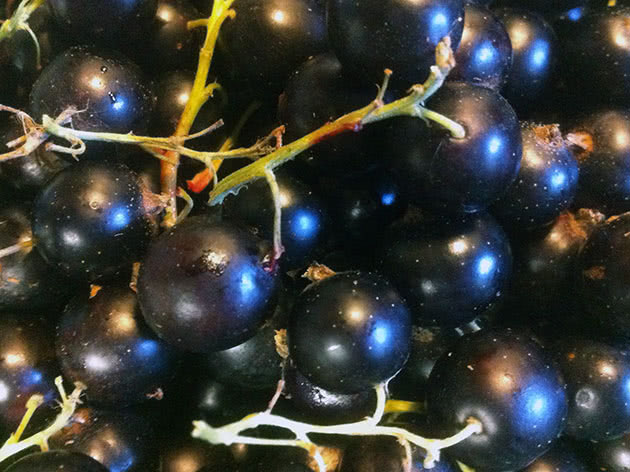

Black currants can also be grown in cooler areas. For example, in the Urals, currants of the varieties Nina, Kent, Rhapsody, Pamyat Michurina, Dashkovskaya, Sibilla grow well, and in Siberia - Minusinka, Hercules, Lucia, Zagadka and Brown.
How to choose seedlings


The success of the entire enterprise largely depends on the correct selection of the seedling. Therefore, this issue must be approached with all seriousness. There are the following options for obtaining the desired variety of currants:
- harvesting cuttings from an old fruiting bush;
- acquisition on the side of an annual seedling of the desired variety;
- growing a seedling from a grafted plant.
Of course, it is better to plant a proven variety. To do this, separate the shoot of the current year from the bush and plant it on a prepared place ahead of time.
If it becomes necessary to purchase a black, red or white currant seedling, then it must be selected according to the following parameters:
- have 2 or more stems;
- the branches should be ripe, not green;
- the buds on the stems must be formed;
- the root is lignified and has a little pile;
- there should be no signs of disease;
- roots and stems must not be broken.
Only with such a choice of material for planting currants in autumn with seedlings can one count on the rapid growth and development of a young plant, its resistance to diseases and the formation of a good harvest in the future.
Saplings can be both annual and biennial - the main thing is that they have a well-formed root system.
Experienced gardeners prefer to conduct experiments by grafting a bud or a stalk of a different variety to a currant bush. And then a shoot is taken from this vaccination for planting a new bush. In this case, it is necessary to take shoots from healthy plants that give excellent yields. Such shoots are cut in September - at the time of leaf fall.
Black currant pests
Harmful insects that can damage black currants include currant glass, blackcurrant fruit, pale-footed and yellow gooseberry sawflies, biennial leafworm, gooseberry moth, gooseberry shoot and leaf gall aphid, gooseberry moth and mite currant, spiderweed
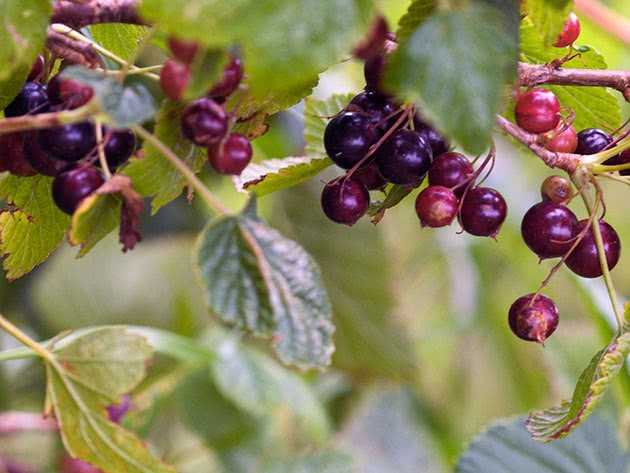

As you probably already noticed, black currants and gooseberries have the same insect pests, and they have common diseases. That is why we have devoted a separate article entitled "Diseases and pests of gooseberries" to the description of these enemies, as well as ways to get rid of them.
How to plant currants in the fall correctly
To plant a crop, it is necessary to withstand a number of conditions so that the planting takes root and in the future the currant bushes please their owner with an excellent harvest.


Preparing a landing site
Even before grafting or purchasing seedlings, you need to find a suitable place for planting.
For varieties belonging to the black currant species, a sunlit area is well suited. It is better if it is located in a low place where the soil is well moistened. The benefits of this provision are as follows:
- a seedling or rooted stalk will develop rapidly;
- a lowered place will shelter him from the winds;
- the plants will bloom profusely and there will be no barren flowers;
- currants will have a high yield;
- the berries will be large.
It is good if the soil on the site will have a slightly acidic reaction, and it will also be loose enough and not floating.
The white and red varieties also respond well to the abundance of light, but can grow and produce the expected yields in poorly shaded areas. Unlike black currants, they prefer soils with a neutral or slightly alkaline soil solution and grow better on elevations. In too loose soil compositions, red and white currants will quickly grow new shoots, which will require additional nutrition to the detriment of crop formation.
Fertilizing the soil
On slightly acidic and neutral soils, before planting, they are limited to dressing with mineral fats. Then the soil needs to be dug up and prepared cuttings or seedlings can be planted.
- On saline and acidic soils, before planting, dolomite flour is required at the rate of 500 g per m2. For this, you should first add flour and mineral fats to the surface of the soil, and then dig up the area by 35-40 cm.
- Dolomite flour will bring the soil solution close to neutral, and fertilizers will saturate it with useful elements. In a similar area, young currants quickly adapt and take root, which will allow them to bear fruit for 2 years after planting.
- Good fertilizer for currants - Humate + 7Iod. But it must be applied, strictly adhering to the instructions, not allowing the dose to be exceeded. You can apply other fertilizers during planting.
Read also Why is red meadow clover useful for humans
Some farmers prefer to introduce organic matter for planting crops - compost or humus. There is nothing wrong with this, but only such fertilizers are best applied to the planting holes 2 weeks before planting day. In this case, the organic matter will mix well with the soil and the soil will have time to settle.
It is necessary to apply phosphorus and potash fertilizers for the regrowth of the roots. Better yet, when planting, combine organic matter with mineral fats. Such a combination of fertilizers is suitable for any soil and, in addition to supplying them with nutrients, will significantly improve the water and air properties of the soil.
Planting methods
You need to start by digging holes for planting a culture, and then you should decide on a planting method.
In the usual way, the planting material in the fossa is placed at an angle of 45 degrees. After lightly compacting the soil, the roots of a blackcurrant seedling should be deepened by 10 cm.And for red and white varieties of culture, it is enough to deepen the roots by 5-7 cm.


When planting currants in the fall with seedlings, all the stems are cut so that a small part with 3 buds remains above the soil level. The lower 3 buds also need to be covered with soil. In the spring, full-fledged shoots will grow from them.
With this method of planting, it must be borne in mind that the plants will hang on shortened trellises. Therefore, the seedling is set vertically when planting. The roots are buried to the same depth as in the classical method.
But it is required to compactly compact the soil around the bush so that the seedling does not pull out. All branches of the planting material are cut in half.
With this option, preliminary preparation of seedlings is required on the day of planting. This removes all basal buds and small shoots. The seedling is planted vertically into the soil at the same depth as in the previous versions. When planting and immediately after it, the seedling is not pruned.
With any planting method, you need to maintain a distance between adjacent bushes from 1.5 to 3 meters. This interval will allow the bushes to develop normally and grow a large number of berries.
Step-by-step landing technology
Correct implementation of the autumn planting of currants is the key to good rooting and excellent spring regrowth of shoots. Below we provide a clear sequence of actions.
- Conduct a thorough examination of the root system. Use a pruning shears to cut out diseased, dry and broken roots from the seedling.
- Pour a 5 cm layer of soil onto the nutrient mixture into the hole prepared for planting. This will prevent root burns.Water the planting sites at the rate of 8 liters per hole.
- Place the seedling in the hole so that the root collar is 10 cm deep. Thanks to this, next spring several shoots will appear from the soil, which are necessary for the normal formation of the bush. When standard varieties of currants are planted, the seedling in the hole is set vertically.


Planting a seedling


Planting by cuttings
- All roots of the seedling should be well spread and covered with soil. To eliminate possible voids in the root zone, the seedling is shaken several times during planting, and at the end of the procedure, the soil around it must be compacted.
- Having finished planting, they begin to trim the seedling. All stems are shortened with pruning shears so that 3 buds remain on the remaining 12 cm long segment.
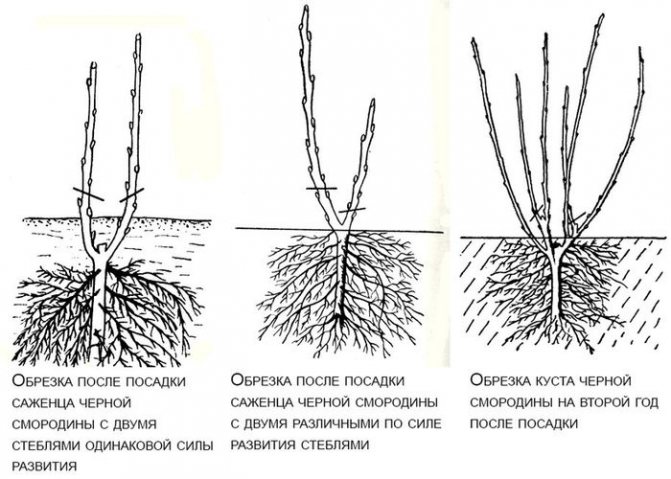

- Water the bush abundantly, pouring 10 liters into each hole with a seedling.
- mulching the soil surface with peat or compost with a layer of 10 cm;
- pouring sand into the holes to prevent the formation of a crust on the soil;
- in dry autumn, frequent watering with warm water should be performed;
- hilling seedlings on the eve of frosts;
- in late autumn, you can cover the planting with a film.
Stages of planting red currants in autumn


Video from the Sad channel, do-it-yourself vegetable garden about planting black currants in the fall
Video: planting red currants in autumn with cuttings
Seedling care after planting
After planting, for better survival of seedlings and cuttings, some more mandatory steps are required:
With the onset of spring, you need to remove all the shelters and break the bushes. This will speed up the moment the plant wakes up from hibernation and begins to grow.
Recommendations for novice gardeners
Below is a list of recommendations that may be suitable for beginner gardeners and experienced farmers:
- The currants should be placed in one place, and not taken apart by its bushes along all the borders of the dacha. This way, more moisture will be retained in the root zone, which will ensure higher yields of berries.
- Pruning currant bushes is permissible both in spring and autumn. Autumn pruning is preferable because after it there is a faster spring formation of bushes.
- It is better to cover currant bushes from possible frosts with a black film.
- Abundant watering after planting in the fall is only needed if the fall is dry. Black currants need more soil moisture than white or red ones.
With the right choice of planting site, appropriate soil preparation and adherence to planting technology, good survival of seedlings and abundant harvests of currant bushes are guaranteed. The berries will be large with excellent taste.
Common mistakes when landing
Even experienced gardeners can make serious mistakes when planting currants in autumn with seedlings, which then necessarily affects the result of the work. Check out the list of common mistakes:
- It is necessary to buy seedlings with an open root system no earlier than the planting period in this region. If you purchase them earlier, then they may not be suitable for planting, since they have not entered a state of rest.
- It is unacceptable to plant seedlings in a freshly dug area. The soil has not yet settled there and you can make a mistake by deepening the root collar.
- Do not apply high doses of mineral fertilizers when planting. This can create a corrosive environment in which beneficial soil bacteria will die.
Possible mistakes when planting black currants in the fall:
Content
- Description
- Planting black currant When to plant
- Planting in spring
- Planting in autumn
- Spring care
- When to trim
- How to propagate
- Beneficial features
When she starts to bear fruit
Above, we examined the features of planting currants in the fall with seedlings and cuttings, now the time has come for the main question - when will the plant bear fruit? With the onset of spring, currant bushes, depending on weather conditions, begin to grow in the last days of March or early April. The first to bloom is the black variety, and then it is the turn of the red and white currants to wake up.
Black currant


There are mixed buds on it, which at first give a shortened shoot, on which a flower brush is formed at the base. Fruit clusters of this type of currant are evenly spaced along the entire length of the shoot. The greatest number of berries in the black currant is given by the branches of the last year. Of particular value are annual growths on branches that are 2 years old if they are located in the upper tier. It is on these growths that the largest berries grow.
On the growths that appear on four-year-old branches, berries are also formed, but they, as a rule, are small and prone to shedding.
Branches that are more than 4 years old are unproductive. Weak growths appear on them with an inferior and easily crumbling berry. Often, such branches dry up, starting from the top, and new shoots grow to replace them from the root collar.
As a result, it turns out that the branches that are from 1 to 3 years old have the greatest value for the formation of the harvest of berries. They form high-quality berries in large quantities. Branches older than 3 years produce little yield and should be cut.
Red currants
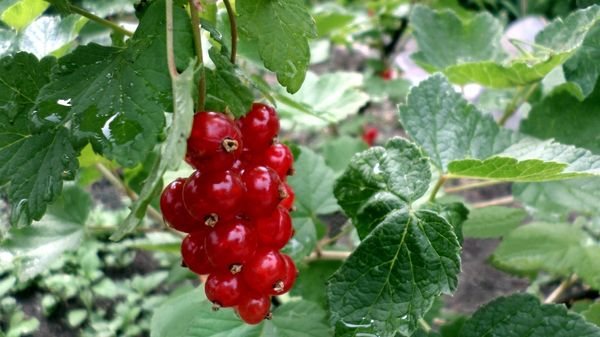

In the red variety of currants, the greatest yield of berries is obtained from branches at the age of 2-5 years. Sometimes even branches that are more than 5 years old also give quite a decent harvest.
Skeletal branches have many fruit branches with a huge number of flower buds. However, the apical bud is always vegetative, a new shoot emerges from it, bearing new fruit twigs. Fruit branches are usually located in the upper tier of the skeletal branch, and the rest of the stem does not branch at all.
Such an arrangement of fruit twigs forms a certain layering of fruiting, when the berry harvest is formed on the border of the simple past years and a new increase. However, in some varieties, flower buds are deployed along the entire length of the shoot.
Currant is a crop that requires minimal maintenance and time-consuming. At the same time, it consistently gives a good harvest of berries, which are very useful for humans. By consuming such berries, you can significantly strengthen your immunity and become immune to pathogenic pathogens. Due to these characteristics, currants must be planted in their own area.
Read also How to make an autumn bouquet
Adhering to the rules set out in this article and following the recommendations for planting currants in the fall with seedlings and cuttings, you can grow red, black or white currants in your country house or in your garden plot.
Having a dacha in the suburbs, I thought about whether currants will take root well in our region. My whole family loves these berries, so having familiarized myself with the topic of planting and caring for this shrub, I took a chance and planted currants at my place.
I had no problems growing the plant. This article will help you familiarize yourself with the plant and its features.
Many summer residents and gardeners are not averse to seeing such tasty and healthy berries as currants on their site. Planting this plant is an important step in the fight for a good harvest. However, not everyone knows when to plant currants in the Moscow region. This issue is worth considering in more detail in this article.
Black currant - description
The fibrous root system of black currant is located at a depth of 20-30 cm. The height of the black currant bush reaches 1 m. Young shoots of currants are pale and pubescent, adults are brown.Black currant leaves are 3 to 12 cm long and wide with three to five wide-triangular lobes, the middle of which is often elongated, have serrated edges and golden glands along the veins, which give off a well-known aroma. The upper side of the leaf plate is dark green, dull, the lower side is pubescent along the veins. Drooping racemose inflorescences, consisting of 5-10 pinkish-gray or lavender bell-shaped flowers, often densely pubescent on the outside, bloom in May or June. Blackcurrant fruits are glossy blue-black fragrant berries up to 1 cm in diameter.
Black currant is one of the most popular horticultural crops in the middle lane, which is grown by hobbyists as often as raspberries, gooseberries and strawberries, and much more often than blackberries, strawberries and blueberries. This culture has earned such popularity not only due to its taste and bright aroma, but also due to the large amount of vitamins, acids, micro- and macroelements necessary for a person, which contain black currant berries.
We will tell you about how planting and caring for black currant is carried out, in what ways it reproduces, how to cut black currant, how to feed it, we will give a description of the varieties of black currant, the most productive and easy to care for, we will describe what pests and diseases of black currant can complicate its cultivation - you will find answers to all your questions in our article.
- Meadow clover: properties and contraindications, cultivation
Choosing a seat for landing
Before starting planting, carefully consider where your currant bushes will be located. If you choose the right site, then this plant will delight you with an excellent and useful harvest for several decades.
Currant bushes prefer good lighting and slopes, but not too steep. The plant is quite capable of withstanding the shade for a short period of time. The site should be well moisturized and protected from gusts of wind. It is better to use neutral or slightly acidic soil as soil for currants.
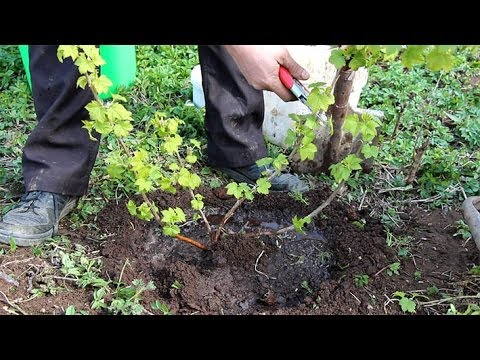

Bushes are often planted along the fence, the fence should be located at a distance of 1 meter. Planting is also possible between young trees, for example, in your garden, but the distance from tree to bush must be at least 2 meters.
Do not plant currants in lowlands, where there is a possibility of stagnant water. When planting, you need to think in advance about how to remove excess moisture from the site. Be sure to take into account the fact that the plant does not feel well near any bodies of water.
From constant moisture, the root system will begin to rot and the currants will die. In winter, the bushes are well preserved if they are covered with snow. Otherwise, in the wind and frost, open currants have a chance to die.
You cannot plant the plant in a place where any currant or gooseberry previously grew. This soil is full of toxins and these will adversely affect young shoots. Look through the entire area, if moss grows on it, it means that the earth has an increased acidity, which will destroy the currants.
The choice of planting material
When buying black currant seedlings, you should pay attention to the presence of 3 main roots 18-22 cm long. The branches must be healthy, without outgrowths and sagging, the buds are tightly pressed against the branch, and the tops must not droop. Otherwise, the bush will be infected with a scab, kidney mite or powdery mildew.
When purchasing currants, you need to give preference to annual seedlings, because when planted, the lower buds will grow, and the bush will grow lush. If you had to buy an older specimen, all shoots are cut off when planting and only 4-6 buds are left. This is necessary for a good rooting of the plant, because with a large vegetative mass, the seedling will experience a lack of moisture and grow poorly.
It is good to plant several currant bushes next to it, because although modern varieties are self-fertile, cross-pollination is beneficial for increasing yields.
Red and yellow currants cannot be planted near black, their proximity mutually oppresses each other. Honeysuckle and cherries feel good next to black currant. Of the herbaceous plants, the best neighbors are garlic, onions, herbs, marigolds, and calendula. For tomatoes, peppers and potatoes, the phytoncides secreted by black currants will be a good defense against uninvited amateurs.
The right time for planting
The most common question among new gardeners is choosing the right time for planting. In the Moscow region, planting currant bushes is best done in early autumn. The most successful period is the beginning of September. In this case, the root system will have time to strengthen before the onset of cold weather. After wintering, the currants will begin to grow actively.
Currant is really an unpretentious plant, therefore, even having planted it in the summer, you can not be afraid to be left without a crop. When planting in spring, you can expect the first harvest only after a year. When planting in autumn, you will harvest the crop in the first spring. From this it follows that it is better to plant currants in the Moscow region in the fall.
The best time for planting in Siberia, the Urals, Moscow region and southern regions
It is worth planting currant bushes in early autumn or spring. In the northern regions, in the Urals and Siberia you can plant currants in the summer (end of August), in outskirts of Moscow - end of September - beginning of October, in the southern regions disembarkation is carried out later - from 10-15 days of October. This allows the plant to adapt to the soil. And at the same time, and adapt to wintering. And the mother bush tolerates cuttings more easily at rest and the approach of winter. But the optimal planting time is September. And for all regions.
Spring planting is carried out on warm soil. It is better to start it at the end of March.... Then the earth is warmed up, and the soil almost does not freeze. And you don't need to water such a plant. But the shoots will not start growing at a high speed. This will give time for the cutting (young bush) itself to take root.
Selection and preparation of a seedling
There are several ways to plant currants: cuttings or seedlings. If you decide to use seedlings, then you should carefully consider them before buying. Often, inexperienced summer residents are deceived when they choose planting material on the market.
The plant may simply be sick or as a result, it will grow completely different from the one you initially chose. It is best to buy seedlings from a specialized store. There you will not only be provided with all the necessary information. They will select a variety, but they will also give a check for your purchase.
It is better if the seedling is two years old. These specimens will grow much faster than annuals. In addition, the roots of the seedling should be moist, and ideally also processed with a clay mash. The branches of the seedling should be straight and have several healthy buds.
If you scratch the seedling at the bottom, then you will see a green shade of the bark and feel the bright aroma of currants.
Before planting, the seedling must be prepared. On the way from the store to the site, the roots should be packed in a damp cloth and polyethylene. Try to keep the plant upright on the way.
If you do not plan to plant currants on the day of purchase, dip the roots of the seedling in a clay mash and dip in sawdust. Remove all dry areas before planting.
Shoots should not be longer than 20 cm, additionally remove all leaves from the plant. Leave only a few buds on the branch, which will soon give the first leaves. An important point is that you need to plant currants not evenly, but slightly at an angle.
Properties of black currant
Useful properties of black currant
Black currant fruits are considered a source of health - so many useful substances for the human body are included in their composition. Black currant berries contain vitamins C, B1, B2, B6, B9, D, A, E, K and P, pectins, essential oil, sugars, carotenoids, phosphoric and organic acids, potassium, iron and phosphorus salts. And the leaves, in addition to phytoncides, vitamin C and essential oil, contain sulfur, lead, silver, copper, manganese and magnesium.
The amount of vitamins and other nutrients in black currant is much higher than in any other berries, so it is a healthy food product that strengthens the body, enhances immunity and enhances the healing effect in the fight against diseases. Black currant is indicated for Alzheimer's disease, diabetes, malignant tumors, problems with the cardiovascular system and vision. The use of currant berries is beneficial for progressive atherosclerosis, kidney, respiratory and liver diseases.
Due to the anthocyanidins they contain, black currant berries have anti-inflammatory and disinfectant properties that help the body cope with angina - currant juice diluted with water, rinse a sore throat.


A decoction of black currant berries is useful for anemia, hypertension, bleeding gums, stomach ulcers, duodenal ulcers and gastritis. A mixture of currant juice and honey is used to treat a severe cough.
Rubbing the pulp of berries into the skin, you can make freckles and age spots not so noticeable, and when rubbing it into the cuticles and nail plates, you will make your nails stronger and more beautiful.
The leaves of black currant also have medicinal properties, which many people gladly add to tea, pickles and pickles. The leaves contain more vitamin C than berries, so decoctions, infusions and tea have tonic, anti-inflammatory, antiseptic, diuretic, cleansing and antirheumatic properties. Medicines from the leaves are used for gastritis, cardiovascular diseases, gout, and externally - for dermatitis and exudative diathesis.
Both decoctions and infusions can be prepared from both fresh raw materials and dried black currant leaves. From young foliage in the spring, you can prepare a vitamin drink that strengthens the body: dilute any sour juice with boiled water, pour this mixture over currant leaves for a day, then strain, add a little honey if you want and drink half a glass a day.
You can make wonderful and healthy blackcurrant vinegar from the leaves, a few drops of which will add taste and aroma to any dish: pour fresh blackcurrant leaves with cold sugar syrup (100g of sugar per 1 liter of water), close the container with gauze and leave to ferment for 2 months, then strain and bottle in dark glass.
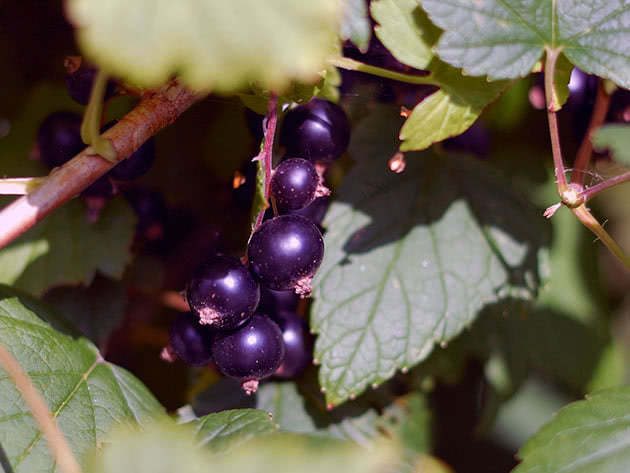

Landing
Before starting planting, it is worth preparing the soil. It is necessary to carry out these works about a month before planting. If in the past there was a flower bed on the site or vegetables grew, then you do not need to fertilize the soil. If the soil is too clayey, it must be diluted with black soil.
Planting currants is carried out according to the following scheme:
- The site needs to be dug up and leveled well;
- Clear the place from all unnecessary things, including stones, weeds and other things;
- If there are large clods of earth on the site, they must be broken;
- Dig a planting hole, while putting the top layer to one side and the inner layer of the hole to the other;
- Spread fertilizers or wood ash at the bottom of the pit;
- A small layer of soil is needed per layer of fertilizer, so you will protect the roots of the plant;
- If the soil is dry and hard, sprinkle it well with water a few days before planting;
- Plant a plant in the hole and cover with soil.
In more detail about planting currants in the video:
We fertilize the soil for young bushes
For those farmsteads where soils with a low acid content, it is enough to fertilize with a mineral additive before planting. And after fertilization, slightly loosen. And you can plant a prepared cutting.
And where there are a lot of salts and acids, it is necessary to slightly improve the soil. This is done like this:
- the top layer of soil is removed at the landing site at 40-45cm
- the extracted soil is mixed with dolomite flour (0.5kg per 1 sq.m.)
- falls asleep back to the future landing site
- fertilized mineral additives.
This will help the plants to take up well and actively bear fruit in the second year after planting.
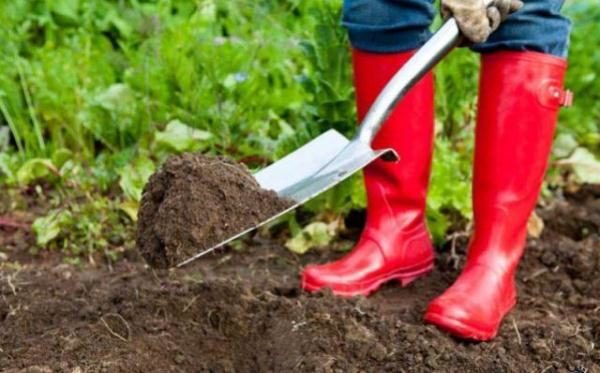

Before planting currants, mineral fertilizers or compost are added to the soil
Fertilizers that should be used should be as natural as possible. Best suited for all varieties of currant Humate + 7 iodine for fruit shrubs... True, you need to use it strictly according to the instructions, not exceeding the dose.
Many gardeners prefer to fertilize the soil for planting currants with humus or compost... This will also give excellent results for the plants themselves and their owners. But humus must be poured into prepared places a couple of weeks before planting the cuttings. Then the soil has time to settle slightly. And the compost itself mixes better with the soil.
Sometimes places for planting currant bushes are fertilized with potash mixtures... This approach takes time and additional expense. Although such fertilizer is ideal for loamy soils. But on top of the mixtures, it is necessary to pour a layer of soil for the calm growth of a young bush.
Plant care
After planting the currants, each hole must be shed well, with about 5 liters of water. After that, you need to sprinkle the seedling again so that the roots are at least 5 cm deep from the soil surface.
After that, the soil is well compacted, and the seedling is watered again, only now you will need several times more water. When the liquid is absorbed, a layer of mulch should be laid around the plant.
Currant is a fairly moisture-loving plant, so it will have to be watered often, especially during the period of active growth. If the berries crumble abundantly from the bush, this means that the plant does not have enough moisture. The first plentiful watering is carried out at the end of May, it is during this period that the active growth of currants occurs.
The next time you have to water the plant at the end of June. At this time, berries are actively ripening. The amount of water for irrigation directly depends on the weather conditions. If the summer in the region is too dry, watering will be frequent and abundant, the main thing is that the soil is moistened to a depth of half a meter.
Pruning is carried out in the spring and autumn, that is, twice a year. Pruning in the spring will boost your yield, and pruning in the fall helps to form a normal bush and remove any shriveled or damaged shoots. When pruned annually, the currants will bring you an excellent harvest.
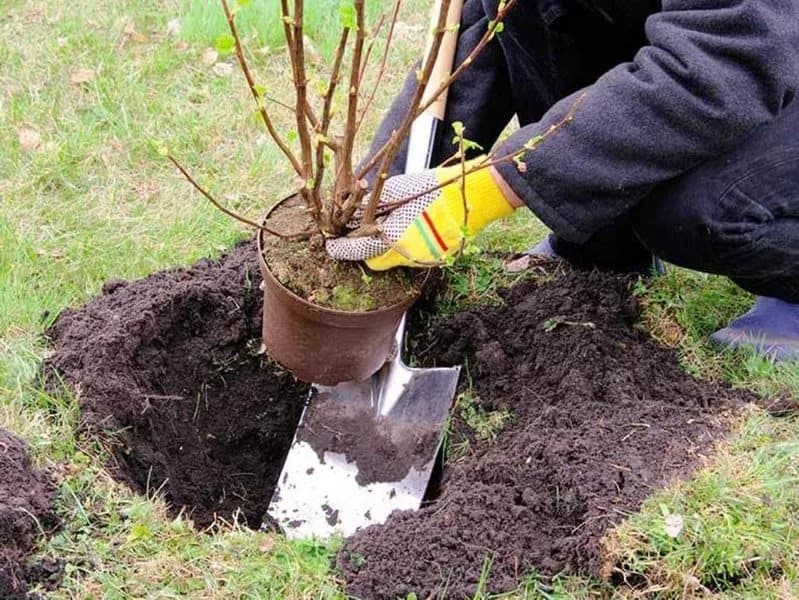

Planting a plant in the open in the fall, a step-by-step guide
First, it is worth digging a hole for planting a plant. Next, it is worth deciding on the type of landing.
If planted in the traditional way, then the plant in the hole should be positioned so that above the surface of the ground it is in an inclined position at an angle of 45 degrees. At the same time, for black currants, after soil shrinkage, the root system should deepen by 10 cm. And for red and white - a little less (5cm). Pruning is required up to 3 buds above the ground.
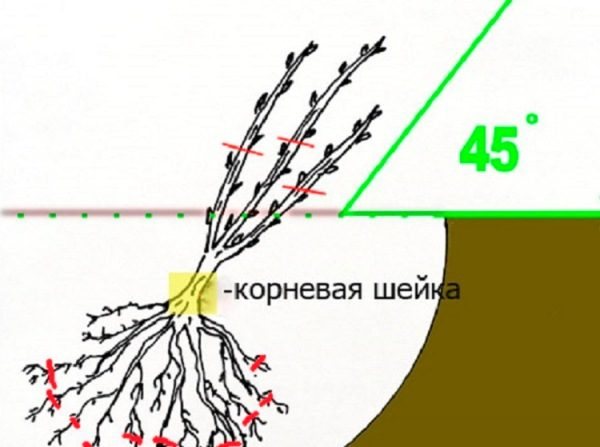

Scheme of the correct planting of a currant bush
When sprinkling the plant with soil, it is worth making sure that the lower 3 shoots are also covered. Then in the spring young branches will grow from these buds.
For the fan-shaped methodwhen the plants are hanging on short trellises, the bush is placed vertically. The deepening of the roots is the same as in the previous method. But here it is worth compacting the place under the bush. And then the branches should be cut to half.
Trellis method involves pre-pruning before planting. Then it is necessary to remove all near-root buds and small shoots. Then plant it vertically in the ground. But after planting, you do not need to prune such a bush. Deepening of the roots, as in the previous methods.
Reproduction
Provided that a currant bush is already growing on your site, and you want to plant another one, but in a completely different place, you will no longer have to buy a seedling. For the reproduction of currants, it is important to know only the methods of this process:
- With the help of seeds. This method is very painstaking, complicated and not at all popular. First, you must pick the largest berries, keep them in water for several hours and carefully remove the seeds. After that, dry the seeds and put them in a woven bag until you start sowing them;
- Cuttings. Cuttings can be prepared during autumn or spring pruning. Only an annual plant is suitable for pruning. The length of the handle should be at least 25 cm and 6 mm in volume. Cuttings are planted in the spring;
- Layers. This method is the most common and easiest. You only need to lower the side branches to the ground, sprinkle them with soil and press them with metal brackets. When you see the first shoots, the maternal shoot can be cut off.
As you can see, planting and caring for currants in any region, including the Moscow region, is not so difficult. Your labors will definitely be rewarded with a bountiful harvest of useful berries.
Tips for beginner gardeners
A few useful information that will be useful not only for beginners, but also for seasoned gardeners:
- currant bushes are best placed in one place, and not around the perimeter of the site - this will give bountiful harvests and help the plants retain the right amount of moisture
- you can cut currant bushes not only in spring, but also in autumn - the formation of bushes in the spring after autumn pruning will be more active and faster
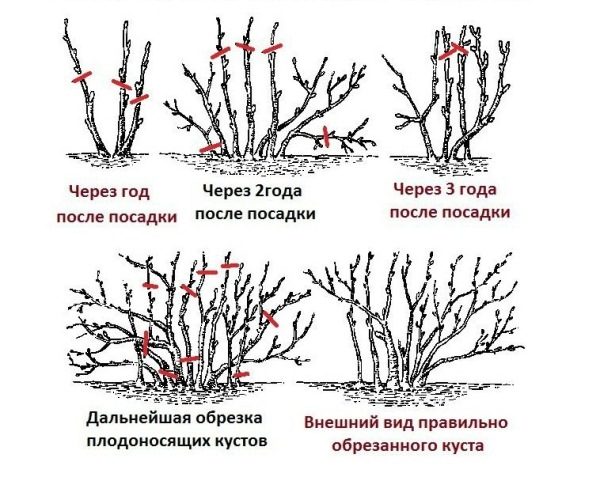

The scheme of correct pruning and the formation of a currant bush
- from frost on the ground, currants are better darken - this will give good condensation even from the winter sun
- water plants it is abundantly needed only during drought periods - black currant especially loves water.
Choosing the right place, preparing the soil, adherence to planting technology guarantees abundant harvests from each bush... In this case, the berry will be large and tasty.
The currant bush lives on average 15 years and bears fruit most of its life. Over time, old plants need to be replaced with new bushes, and then there is a need to multiply the culture. Cuttings and seedlings are planted in the spring, but it is better to plant currants in the fall with seedlings and cuttings, when ideal conditions for survival are created.
Landing features in different regions
Features of planting crops, depending on the climate, are summarized in the table.
| Landing | Southern regions | Middle lane | Cold climate |
| Spring | Not recommended, allowed only at the earliest possible date | Yes | |
| Summer | Not | With a closed root system, or if cloudy weather is expected in the next 2 weeks, or with subsequent sun protection | |
| Fall | Yes | No later than 3 weeks before frost | Mid to late August |
Care requirements
The main care for black currants is the same as for red, white - young bushes need regular moisture, loosening, feeding and protection from diseases and pests.
Also, in order to avoid drying out, the bushes need to be shaded with burlap or agrofibre for several weeks.
Watering
In the first month, watering should be moderate, but frequent - two weeks every other day, then every five days. Water consumption for one seedling - 5 liters.
You can arrange periodic irrigation of the crown, especially in extreme heat - once every 7 days. The procedure is carried out in the evening to avoid sunburn.
Loosening and mulching
After each watering, the soil around the bushes is loosened to a depth of 4-5 cm to maintain its moisture and breathability. Then add mulch from peat or garden soil. It will protect the soil from rapid drying out and prevent the growth of unnecessary vegetation.
It is also necessary to remove weeds in time, which drown out young bushes, take away their moisture, nutrients and are a source of reproduction of pathogenic microflora.
Top dressing
The first feeding of currants is carried out two years after planting the bushes. The best time is early spring, when the snow thaws, the soil warms up, but always before the beginning of the growing season.
Usually, mineral dressing is used several times per season:
- on the eve of flowering and budding;
- after the completion of budding, when the bushes begin to actively increase the green mass;
- at the stage of pouring berries (in early July);
- after harvesting in autumn.
To do this, take ready-made complexes, which include nitrogen, phosphorus and potassium. The scheme and dosage are indicated on the package.
You can also use wood ash - a good substitute for potassium, does not contain chlorine.
An excellent replacement option would be organic matter - compost or rotted manure. 15 kg of substance are consumed per bush, then watered abundantly.
Some gardeners alternate mineral fertilizers with organic fertilizers every year.
Additionally, foliar nutrition is carried out - they are sprayed with a mixture of 2 g of boric acid, 10 l of water, 2 g of zinc sulfate, 5 g of manganese and 2 g of copper sulfate. Irrigate in the evening three times per season - before flowering, immediately after it and at the stage of pouring berries.
Pruning


Sick branches need to be removed
Basic care for black, red, or white currants involves cutting regularly in early spring. This is usually done before the start of sap flow. Its essence lies in the removal of branches damaged by frost, winds, diseases.
Additionally, you can carry out this procedure in the fall a month before the onset of cold weather, if necessary. They also get rid of old parts that have ceased to bear fruit or have dried out.
By the age of 7, red currants have about 25 branches. Therefore, from this age they begin to cut out 3-4 of the oldest branches, replacing them with a young growth. Basal processes and one-year-old shoots are also subject to removal.
To avoid infection, take a sharp and sterile instrument. After cutting, the bush is irrigated with a solution of copper sulfate.
Preparing for winter
Currants have good resistance to cold weather, but in the first years of life, the seedlings will need insulation for the winter, especially in the Urals, Siberia, the North and the middle zone.
Approximately 2 weeks before frost, the near-trunk zone of each bush is covered with earth, sprinkled on top with a thick layer of straw. The above-ground part is covered with burlap or covered with spruce branches. Under such material, the shoots will not rot, and will not freeze.
They remove the shelter in the spring, when the threat of the last frost has passed.
Prevention of diseases and pests
Autumn treatment against diseases and pests is important for this crop, because it enters the growing season very early in the spring and the risk of infection is high.
Usually, preparations containing copper are used - Bordeaux liquid or a solution of copper sulfate.
The crown is irrigated at the end of the collection of berries and the fall of the foliage. They are sprayed again after winter, when the heat of the street stabilizes, but always before the start of sap flow.
Preparatory work
The success of growing currants depends on the correct choice of a place for planting and compliance with the rules for processing planting material.
Site selection and soil preparation


An incorrectly chosen area for planting currants will lead to a decrease in yield or loss of quality of berries.
A luxurious bush with dense greenery will grow on poor soils, but there will be few berries on it. With a lack of sun, they will remain unripe and will not acquire sweetness.
To get a juicy, sweet harvest, you need to plant currants in a sunny area with a deep (at least 1 m) location of groundwater. Too wet, especially flooded areas in spring, will destroy the root system of the plant. But a site too open to the winds on a hill currant is also not suitable. The plant is afraid of drafts and drying out of the root system.
You can not plant currants in an area with abundant thickets of wheatgrass, as well as in place of raspberries or gooseberries. The beginner gardener's guide recommends: the best predecessors of a shrub in the country are perennial legumes, cereals, vegetables and flower crops.
Currants prefer light or medium loam. Too clay soil will lead to waterlogging of the root system and restriction of oxygen access to it. The sandy soil is too loose, so the roots in it will dry out and lack nutrients.
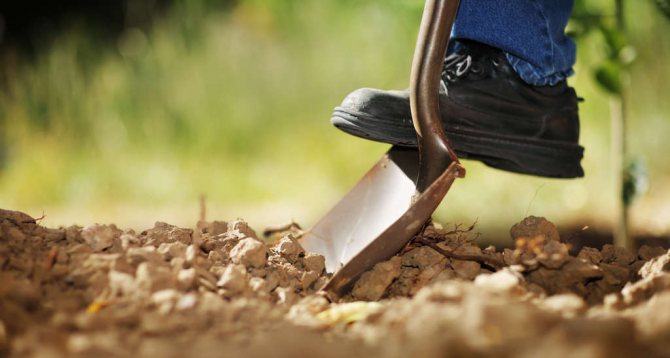

A site 2-3 weeks before planting is dug into 2 bayonets of a shovel, removing the rhizomes of old plants
During digging, 8 kg of humus, 50 g of superphosphate, 30 g of potassium nitrate are introduced per square meter. If the soil on the site is too acidic, add additional lime or bone meal.
Preparation of seedlings
The way home after landing and the time before landing is the most crucial moment. The seedling must be transported strictly in an upright position. To avoid drying out the roots, they are wrapped in a damp cloth and then placed in a plastic bag.
If the planting time has not yet come, for storage, the roots are dipped in a clay solution and placed in sawdust, previously soaked in water.
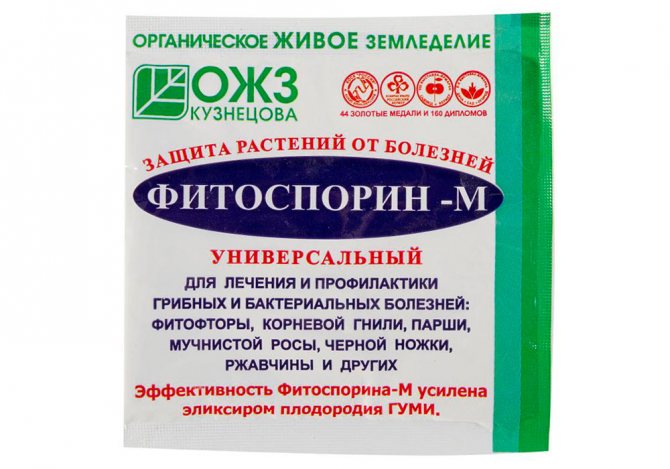

For disinfection, the root system is soaked for 2-3 hours in a solution of Fitosporin
Before placing the seedling in the soil, cut dry roots, remove all leaves.
Post-transplant care
Immediately after transplanting, the shoots of currants need to be cut off, if this is not done, the plant will get used to the new place for a long time. Also, at first, abundant watering is important: the soil should always be moist, a young shrub will need up to 20 liters of water, and an adult - up to 40-50 liters per week. If the bushes were transplanted in the fall, then it is recommended to huddle them, since in this case the plants will better endure the winter. But at the beginning of spring, the earthen embankment needs to be leveled, otherwise the currants will put out lateral roots there, which will freeze out in winter.
After transplanting, the plant does not need additional fertilizing, since the fertilizers were previously introduced into the planting pit. Otherwise, the roots of the plant will get burned.
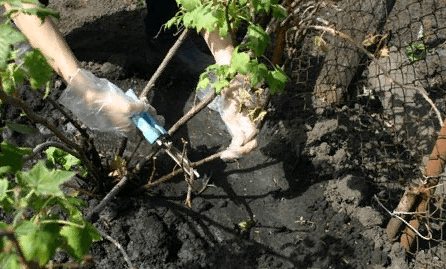

If, after transplanting the currants, you do not cut off the shoots, then the process of survival of the bush in a new place will be delayed
Testimonials
In order for the bush to grow well and bear fruit, an inclined and slightly recessed planting creates optimal conditions for the formation of a bush. At the same time, conditions are created for the creation of additional roots.
Mrria
There is nothing difficult in preparing seedlings for planting. To begin with, we remove all the broken, diseased, dried roots of the seedlings. Then we proceed to processing their aboveground part. And in this case, you also need to say goodbye to sick, broken and dry parts. Before planting, in order to avoid drying out, dip the roots in a clay mash.
yu8l8ya
If the bushes are not too young, and the composition of the earth is even slightly different, then the bushes when transplanted to a new place do not take root well and this affects the harvest. In such cases, you need to dig out a bush with a large clod of earth.
Nemizida
How to grow currant seedlings on your own
Despite the fact that seedlings are the most popular planting material, currants can be planted in two more ways: cuttings and layering. In this case, you need to find the variety of currants that you like, and grow seedlings from it yourself. This can be done by cuttings and layering. What is the difference between these concepts?
Both methods are ideal if the original currant bush grows on your personal plot, and you want to plant a few more bushes in addition to increase the amount of the crop.
But if you want to plant the same variety of currants as those of your neighbors or friends, then it is better to use cuttings.
Interesting! Fresh tea with the addition of dry or fresh currant leaves improves brain function.
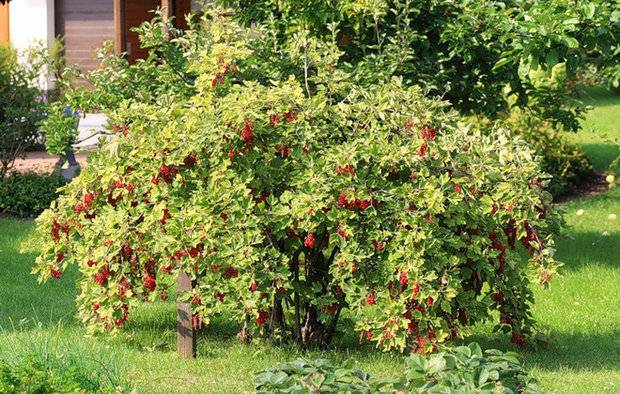

Planting currant cuttings
Buying seedlings is a very risky business. Even with all the rules for planting and caring for currants, the result can be disastrous. It is worth purchasing young bushes only from those sellers whom you trust, or in special nurseries, where each plant is under the constant supervision of professionals. But what if there are no credible sellers and the nurseries are too far away? In this case, you can grow the seedlings yourself. All you need for this is a bush of the currant you like, pruning shears or garden shears and desire.
- In order to properly prepare cuttings, you need to figure out which branches you need to cut them off. Indeed, the choice of material depends on how quickly and well the cuttings will take, as well as the yield of future bushes. Annual currant shoots are ideal for cutting the material.


- It is best to harvest lignified cuttings in the fall. The ideal time is the second half of September. In spring, shoots are just beginning to grow actively, and suitable material must be taken from those shoots that have already reached their peak in growth. Twigs that are too young are not suitable for this purpose.
- It is necessary to cut the material exclusively from strong and healthy currant bushes, taking into account the volume and taste of the crop. You need to choose shoots for cutting cuttings based on their length and diameter. The thickness of the branches should be at least 0.6 cm, and the length at least 15-20 cm.
- Only a clean and sharp tool should be used to cut the material. With a dirty pruner, you will cause irreparable harm to both the main currant bushes and the cuttings. When using blunt instruments, the survival rate of the future planting material is significantly reduced.
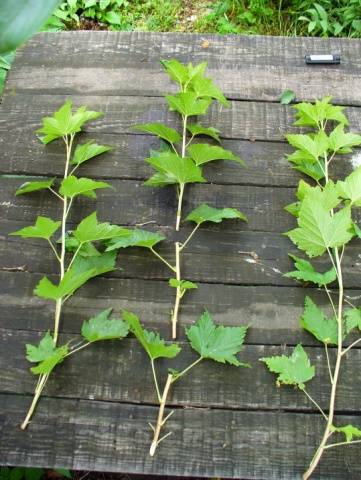

- Each cut shoot can be divided into several cuttings. It is important that each of them has at least 4-5 leaves. From the two lower leaves, the leaf plate is cut in half or completely. The cuttings of the leaves must be left.
- Make cuts even at right angles: at the lower end of the cutting, no more than 0.5 cm from the last bud, at the upper tip you need to retreat 0.7-1 cm from the extreme leaf.
- After you have cut a sufficient number of cuttings, they need to be put in a special solution for a day, which promotes the active growth of the plant root system. It is important to take into account that only the lower parts of the shoots should be lowered into the solution, no higher than two buds from the lower cut. In the absence of a composition that accelerates the growth of the root system, you can put the cuttings in ordinary water for a day.
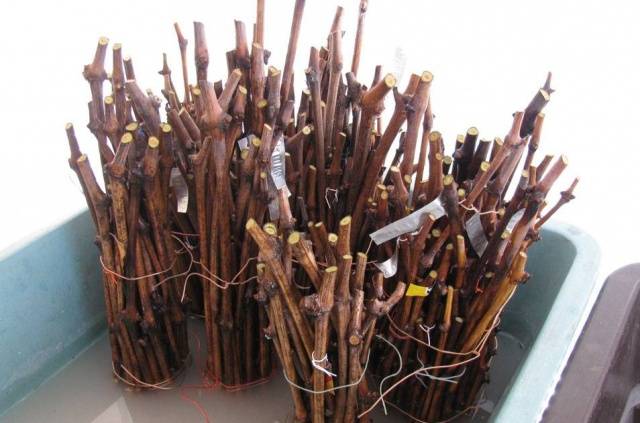

- Cuttings should be planted in accordance with the general rules for planting currant bushes, not forgetting about the angle of inclination of 45˚ in relation to the surface of the earth. There is only one difference: it is necessary to bury the cuttings in the ground so that the two upper buds remain above the ground. In this case, the distance between the cuttings should be at least 10-15 cm, row spacing - 45-50 cm.
- Do not forget about abundant watering.
If there is a strong heat at the end of planting work, be sure to take care of the planted cuttings. They need to create shade with gauze or cloth, and also do not forget about regular watering. When the ambient temperature drops, mulch the currant cuttings so that they do not die when frost occurs. In the spring, it is necessary to prune and leave future seedlings until autumn. In the second half of September, excellent planting material will grow on your site, which can be planted in a permanent place.
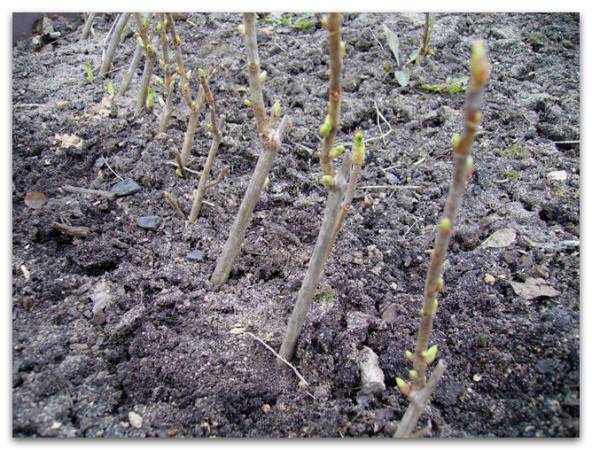

Comment! When planning the planting of currants, take into account the fact that the presence of several varieties of fruit and berry shrubs on one site will significantly increase the yield. In this case, cross-pollination occurs during the flowering period; in this case, there will be much more berries on the bushes.
You will learn more about planting currants using cuttings from the following video clip:
Planting currants with horizontal layering
This method of breeding currant bushes, like the previous one, is simple and accessible to every gardener. It differs only in that the main bushes, from which the currants need to be planted, must be at least 2 and not older than 5 years.


In the spring, as soon as the soil has thawed, but the buds on the currants have not yet blossomed, the ground under the bush must be loosened and fertilized. Shallow trenches are made from the bush. The direction of the grooves should be the radius of the circle centered on the currant. Shoots are laid in these trenches. It is important to select only 1-2 year old branches. Later ones may break because they lack flexibility. The laid shoots are hooked tightly to the bottom of the groove in several places.
Now you need to carefully observe the currant bushes. When the buds begin to swell and open, cover the furrows with earth. On the surface of the soil, only the upper tips of the shoots should be left - the tops.


After a while, the first vertical shoots will appear from the ground. New shoots grow very quickly and when they grow up to 12-15 cm in height, they should be spud. After 3-4 weeks, hilling must be repeated.
In summer, caring for young shoots consists of abundant watering and mulching with peat or compost.
Interesting! Berries of red, black and white currants differ in the composition of vitamins and minerals. A certain color is suitable for each age period. For children, the black berry is most useful, for adults - red, and for the elderly - white currant.
In the fall, when the favorable period has come for planting currants, the grown layers are separated from the main bush. A cursory inspection of the seedlings is carried out. The strongest, well-developed plants with a good root system are planted immediately to a permanent place. But weak currant layering needs to be grown in the garden until next fall.


Step by step instructions and nuances
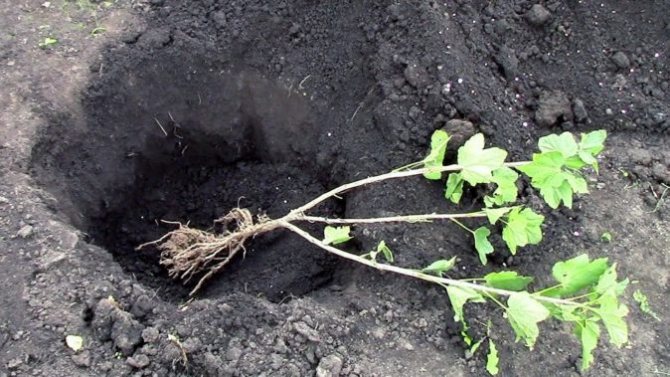

In order to properly plant black currants in the fall, a sunny area should be allocated for it, represented by moist and fairly loose, fertile soil. Preference is given to sod-podzolic soils with the presence of humus and acidity indicators in the range of 6.0–6.5 pH. The landing site should not be negatively affected by wind gusts and stagnant melt water. Excess moisture in the soil can cause root rot and plant death.
- Place places for several seedlings in one row, keeping a distance of 120–140 cm from each other.
- Dig small holes 40 x 40 cm in size and 25 cm deep. It is allowed to prepare a trench with backfilling a small amount of a mixture based on humus, sand and ash.
- If necessary, on too depleted soils, apply organic matter for digging, as well as complex fertilizers without chlorine.
- Slightly deepen the currant seedling into the ground, placing the root collar of the plant about 30–40 mm below ground level. It is necessary to place the planting material at an angle of 45 °, due to this, the yield of the crop will significantly increase and powerful basal shoots will form.
- Sprinkle the base of the seedling with earth and pour it with settled and heated in the sun water.
Benefits of autumn planting
All berry bushes are planted in spring or autumn.
But if in the spring it is warm, there is little rainfall, then the survival rate of the bush during the budding period may be weak.
Also, autumn planting is better because:
- You can more efficiently divide the site, replace berry bushes with low productivity.
- The market offers a large selection of seedlings with open and closed root systems.
- Cool conditions make it easy for the bush to take root with moderate watering.
- The plant spends most of its energy in the fall on the restoration of the root system, and not on the formation of green mass. When the temperature drops below 10 ° C, root deepening begins, which has a positive effect on the development of immunity.
The disadvantage is the high probability of freezing the roots if the winter turns out to be snowless and frosty. To prevent this trouble, mulching should be carried out, a high-quality winter shelter should be built.
Correct planting
It is advisable to disinfect the roots before planting. To do this, they need to be soaked in a solution of Fitosporin for 2-3 hours. Landing procedure:
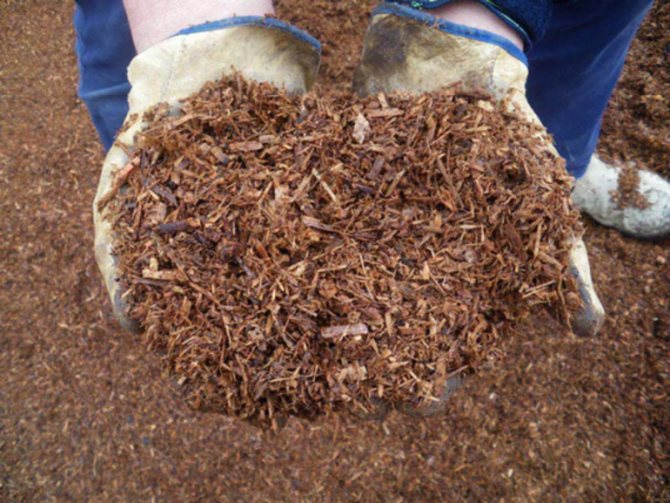

- The currants are planted in a planting pit at an angle of approximately 45 °. As with cuttings, this will allow the plant to produce more vertical shoots.
- The root collar is deepened by 5-6 cm.
- The roots need to be straightened, making sure that they do not come into contact with fertilizers. It is also necessary to pay attention to the fact that voids do not form between the roots - slightly shake the bush in time.
- Cover with earth and tamp.
- Cut the plant to 30-40 cm, leaving at least three buds on the surface.
- Make a shallow groove around the planted bush, where pour 1-1.5 buckets of water. After the water has been absorbed, cover the groove with earth.
- Mulch the soil with peat, straw, leaves in a layer of 10 cm. Mulch will protect the young plant from excess moisture and temperature changes.
If a group planting is carried out, then the distance between the black currant bushes should be 1.5-2 m. Planting different varieties will increase the yield, but then the distance between the black currant and red or white should be at least 5 m.
Depending on the region, for the winter, a young plant is covered with spruce branches or a covering material with spunbond. The plant should be especially carefully covered in regions with little snowy winters. If you know how to plant currants correctly in the fall, then you can confidently count on long fruiting. The currant will root well as the growth of the foliage will not weaken the roots. And next spring, it will begin to grow rapidly and will give the first harvest of beautiful, large, tasty and very healthy berries.
Mistakes for beginner gardeners
To achieve a good harvest, planting is done according to the advice of specialists in nurseries. The most common mistakes beginners make in gardening are:
- Illiterately planned landing period. The moment for the landing procedure must be correctly chosen. It is allowed to carry out the process at a later time, when the currants began to release their first greens. This contributes to excessive stress on the rhizome. The chance that the bush will not take root on the ground increases. Disembarkation too early is not recommended. The low temperature after winter makes the root system freeze. The plant becomes weak.
- Incorrectly created hole. The landing site should be of optimal dimensions: sufficient depth and width. The root system branches out evenly across the hole to get maximum nutrients.
- Young plants for planting are illiterately selected. In the process of planting a seedling, attention should be paid to their general condition. Rotten elements and damage are excluded. It is advisable to contact professional nursery stores. Bushes with an already formed root are purchased from other proven gardeners.
If all the recommendations and conditions are followed, black or red currants will be able to take root in order to bring the owners at least 5 kg from one bush in 3 years. During and after winter, there should be sufficient plant care.If the plant is weak, the risk of disease formation increases.
Pre-planting preparation
The success of the autumn planting of berry bushes depends on the quality of the planting material, composition, soil structure, location and further care.
Selection of seedlings
For growing in the garden, you can use both purchased seedlings and grown from cuttings or an old bush divided into parts. But if you want a strong plant with all the varietal traits, go shopping at a nursery or specialty store.
Chosen according to the following criteria:
- the aerial part should also consist of two or more shoots;
- root system without injuries, lignified, covered with pile, without signs of damage from diseases and parasites;
- branches are flexible, without cracks, breaks, rot and mold.
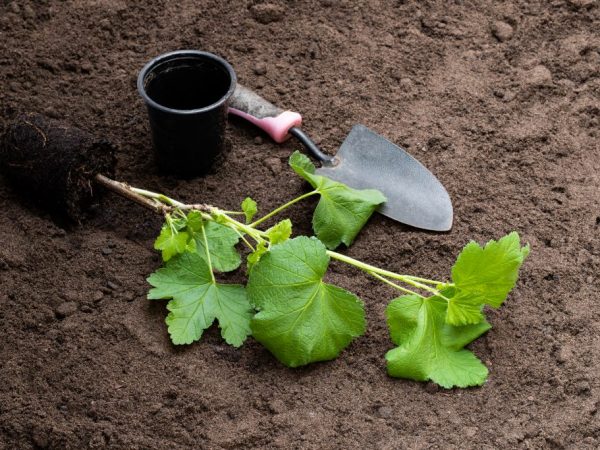

Choose only healthy plants for planting
When choosing such a planting material, you will get a healthy plant that will quickly take root and start growing.
Site preparation
This crop prefers to grow in a sunny place where there is no strong shade, otherwise the foliage will turn pale and the berry harvest will be poor and small. You can plant red and white currants on high ground under the sun.
The black variety is best planted on a flat surface where moisture is constantly retained. It will ensure the rapid development of the aboveground and underground parts, abundant flowering and high productivity.
Acidity is no less important - currants do not like strong acidification. The optimal level is 6 units. If the indicator is lower, the soil can be fertilized with a mineral complex designed for growing berry bushes.
With increased indicators and alkalinity, the composition of the soil must be improved:
- first remove the top layer 45-50 cm;
- then mix it with dolomite flour or slaked lime (500 g per 1 m²);
- fall asleep back on the landing site;
- add minerals - superphosphate and potassium sulfate 100 g each
The currants planted on such soil will actively grow and will give the first harvest in the second year of cultivation.
Some gardeners use compost or humus when planting this crop. For 1 m², they give a bucket of one or another component. When planting on loam, it is worth using potash mixtures, which are sold in a specialized store.
Regardless of the type of fertilizer, before lowering the roots, sprinkle the fertile composition with a thin layer of ordinary soil to eliminate the risk of burning them.
conclusions
- Planting currants in the fall allows you to speed up the rooting process and get a harvest in a shorter time.
- The choice of planting time depends on the climate in the region. In the south, seedlings are planted until October; in the north, planting is better planned for the second half of August.
- Planting material can be purchased at the nursery or prepared by yourself. It is recommended to use only two-year-old seedlings without diseases and mechanical damage.
- It is recommended to plant currants in a well-lit area away from the reservoir. Crop rotation should be observed and plants carefully selected for the garden.
- After planting, it is imperative to mulch the root area, treat the bush from pests and diseases with soda, or other drugs, and shelter for the winter.
What to plant next to
Three rules of neighborhood are universal for everyone in the garden:
- Do not plant nearby crops if they are of the same species or feed on the same nutrients.
- When planting at different levels, consider whether low-growing plants are shade-loving. If a low-growing plant is photophilous, do not plant it under a high one.
- Take into account the depth of the location of the roots and keep in mind that the roots are able to protect their territory with the help of phytotoxins.
Guided by these rules, we will determine which neighborhood is useful and which plant will oppress.
Invalid neighborhood
For black currants, the neighborhood with sea buckthorn, raspberries, apple trees, cherries is unacceptable. Neighborhood is bad for pear and sweet cherry. Red currants should also be planted away from black currants.
Can be planted next to
Honeysuckle and hops are good neighbors. Garlic, calendula, Jerusalem artichoke get along with the berry. The ideal neighbor is onions. They do not interfere with each other, and the onions protect the currants from the kidney mite. Onions should be planted in the fall, this will provide protection for young shoots in the spring.
Dates and geography of planting: table
The main rule here is to give time to the bushes to take root, take root and get ready for wintering. It will take about 20 days for black currants, and about 25 days for red and white currants.
| Geography | Boarding time |
| Moscow and Moscow region | second part of September - October |
| Middle zone of Russia | |
| Leningrad region | end of August |
| Ural | |
| Siberia | |
| South of Russia | second part October - mid-November |
What to look for when choosing seedlings
When choosing a variety for cultivation, it is worth considering that it is zoned. Such plants are much better adapted to local weather conditions, especially unfavorable ones, therefore they are able to give a more bountiful harvest.
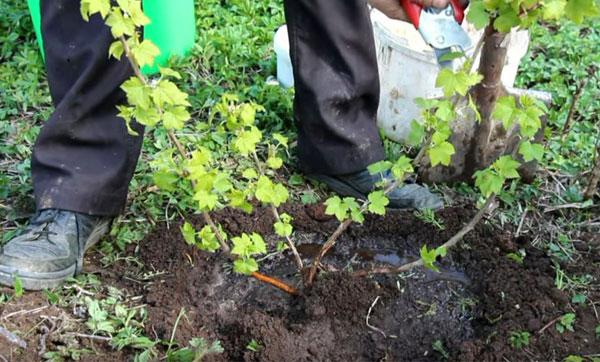

Currant seedlings should be 1 or 2 years old, with powerful fibrous roots, with 2-3 lignified shoots up to 0.4 m long. When purchased in spring, the buds should not bloom on them. The shoots should not be stained, damaged by pests. If there are round buds, then, most likely, there are mites, it is better not to take such plants.
Transplanting currants to a new place
Mandatory transplantation of shrubs is required when the soil is depleted, initially the wrong choice of a place for planting and when redeveloping a personal plot. Other reasons for transplanting currants are:
- breeding varieties;
- excessive thickening of the landings;
- insufficient lighting;
- infestation of the soil in the old place with pathogenic fungi;
- frequent flooding by melt water and rains;
- the need to update shrubs;
- repeated freezing of plants.
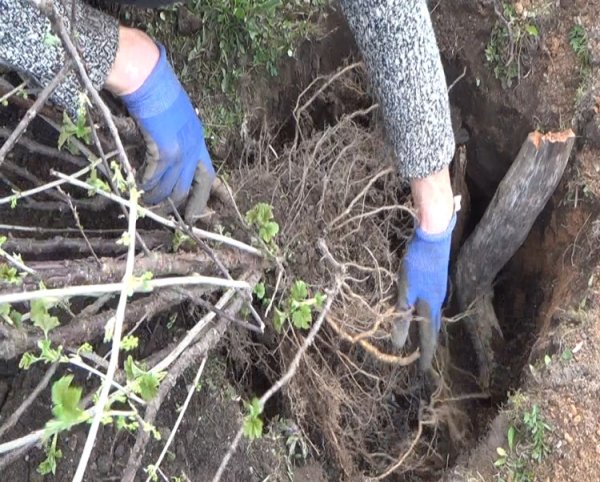

Over time, the soil is depleted, so the currants receive less nutrients and need to be moved to a new place.
To maintain high yields, it is recommended to replant currants every 5 years. In order for the plant to painlessly endure this procedure and not die, you need to know the features of the transplant.
What is the time frame for the transplant
The transplant time depends on the growing region: in the northern regions, due to the harsh winter, a spring transplant is indicated, and in the northern strip of Russia and the southern regions, an autumn transplant is recommended, which should be carried out no later than 3 weeks before the onset of frost. The preferred timing for an autumn transplant is from 10 to 15 September. The timing of the spring transplant is also determined by weather conditions - the air temperature should rise to + 1 ˚C, and the soil should thaw completely, and is limited to the beginning of the growing season, that is, it is carried out in April, before the start of sap flow and until the buds have blossomed.
Choosing a place for transfer
For transplanting blackcurrant, the northern and northeastern slopes of the personal plot are suitable, slight shading is allowed. Currants will grow well in the place where buckwheat, potatoes, corn, beets, beans used to grow. Areas with high humidity and stagnant cold air are not recommended for transplanting, since under such conditions fungal diseases develop and root rot may appear. As far as possible, you need to choose a sunny place, not flooded by rains and melted snow, with loose and humus-rich soil.
Soil and pit preparation
Before transplanting, you need to prepare the soil in the selected area: dig up the ground to a depth of 40 cm and add it to 1 sq. m. soil a mixture of fertilizers from 10 kg of compost, 10 g of double superphosphate and 7 g of potassium chloride.
In August, before the autumn transplant, the site should be dug again. The same digging of land for a spring transplant should be carried out in the fall.
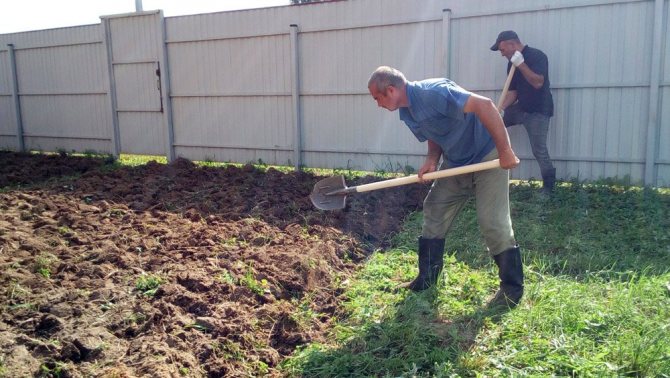

Before transplanting, you need to dig up the soil and apply fertilizers to it
Immediately before transplanting, you need to dig a planting hole: for young bushes - 40x40 cm in size, for adult bushes - 60 cm in diameter and 40 cm deep, and for tall and remontant varieties of currants, the depth should be 60–70 cm. The final size of the planting pit depends on the size of the root system of the shrub. The next planting hole must be dug 1.5 m from the previous one.
Each planting pit must be 1/3 filled with a prepared substrate: mix the soil from the pit with 10 kg of rotted manure, add 300 g of superphosphate and 400 g of wood ash, which can be replaced with 30 g of potassium sulfate. After filling the hole with soil, you need to water 10–20 liters of water.
Correct shrub transplant
If the currant bushes thinned and began to turn yellow foliage, the size of the leaves decreased, the berries were crushed and the yield decreased, it is time to get down to business and transplant the plant from the depleted soil to a new place.
- Before transplanting, you need to dig in the bushes around the perimeter to a depth of 0.5 m.
- Carefully, trying not to damage the roots, dig up the plants with a large clod of earth and transfer them on a substrate to the transplantation site.
- Remove damaged roots.
- If parasitic insects are found on the root system of the bush, they must be removed, and the roots themselves must be treated with a disinfectant solution, for example, a weak solution of potassium permanganate.
- Cut off healthy roots so that they do not exceed 30–35 cm in length.
- Thin the above-ground part of the bushes, leaving only three-year-old shoots.


The shoots of the third year must be left, and the older ones removed.
- Transplant the dug out currant bushes into prepared planting holes, deepening 5–7 cm more than before transplanting, pour 10–20 liters of water and mulch.
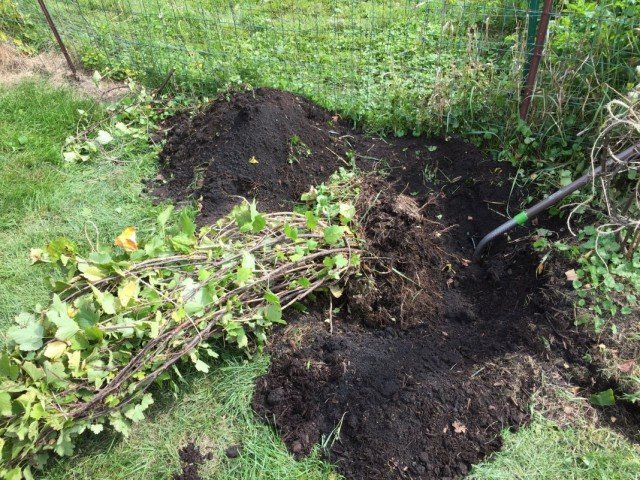

With the correct transplant, the shrub will quickly take root in a new place and begin to bear fruit earlier
Transplanting currants in spring
Spring transplantation of currants should be carried out after the topsoil has warmed up to + 5 ° C, until the buds on the shoots begin to bloom. The bush needs to be moved to a new place along with an earthen clod, so the plant will more easily survive stress and begin to grow faster. At first, after the spring transplant, currant bushes need to be watered abundantly with warm water. After the spring transplant, the branches of the shrub grow faster, and the next year they will ripen sweet and sour currant berries.
Autumn currant transplant
Autumn, as well as when planting currant seedlings, is the ideal time of the year for transplanting mature bushes. Recommended transplant dates are from late September to early October. Moving to a new location should be started after the end of the growing season. Relatively old bushes are transplanted entirely, and it is imperative to prune old shoots. Cut off shoots are not thrown away, but used as planting material. Adult currant bushes are transplanted together with a large earthen clod, so they will better take root in a new place.
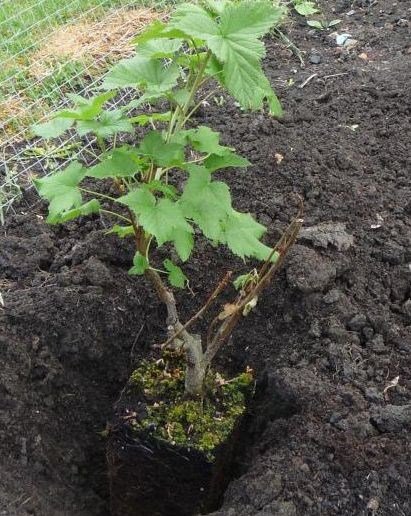

The currant bush must be transplanted together with an earthen clod, so the plant will avoid stress and adapt to a new place
Transplant by dividing the bush
This method of transplanting is not the most popular method for propagating currants. It is used when there is a shortage of planting material, as well as when it becomes necessary to transplant a shrub to a new place. The advantage of transplanting by dividing the bush is the rapid rooting and survival of the transplanted currant, as well as the possibility of carrying it out in early spring or autumn.
Before transplanting, prepare several planting pits 60–80 cm deep, mix the soil from the pits with manure.
Algorithm for transplanting by dividing a bush:
- Carefully dig the bush out of the ground so as not to damage the root system.
- Remove dry branches from the bush and shorten young shoots to 30 cm.
- Using an ax, divide the bush into several parts so that each part has a branched root and shoots with buds.
- Spread the roots of the resulting bushes and transplant the plants into prepared planting pits.
- Cover with soil, compact, pour 10-15 liters of water and mulch with peat or manure.
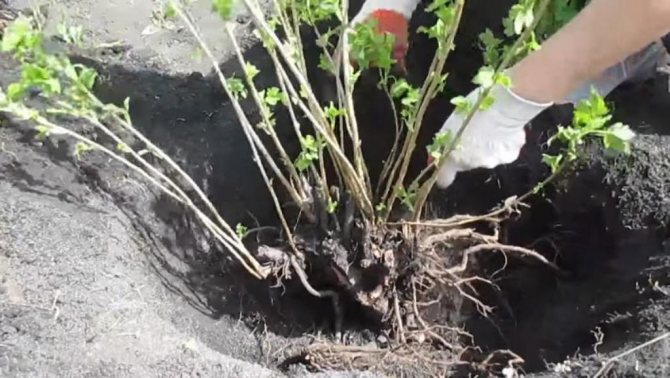

Dividing a currant bush is one of the ways to propagate a bush
Preparing and fertilizing the soil before planting
For planting currant bushes, two main methods are used - in separate planting pits or in trenches. If you plan to plant one copy, the first option will do, and for a small plantation - the second. It should be noted that currants bear fruit better if several varieties of it grow on the site. Sometimes a trench is formed on a hill with a height of 15–20 cm, when the planting is in a waterlogged area.
Also find out what should be the distance between the bushes when planting currants.
The trench or planting pit should have a shallow depth - up to 25 cm, since the rhizome of the currant is superficial. If there are fears that water stagnation may form here, a drainage layer of rubble or chipped bricks can be laid on the bottom. The planting sites need to be properly fertilized, so they are filled by a third with rotted manure or compost, 100 g of superphosphate is added and slightly mixed with the soil. Sometimes the soil is fertilized with urea and potassium compounds, but such dressings quickly dissolve in water and, together with autumn showers, go deep into the soil, becoming inaccessible to the roots of currants.


The distance between the bushes should be at least 1.5 m.
When the soil is prepared, seedlings are planted in pits (trenches) at an angle of 45 ° to such a depth that 3 buds on the shoots remain above the ground. Then sprinkle half the height with soil, watered (5 liters of water per 1 bush), add soil and watered again with the same amount of liquid. At the final stage, the area near the trunk circle is covered with a layer of mulch made of sawdust, peat or sand - this way the moisture will last longer.
The acidity of the soil plays a significant role - it should be moderate or even low. You can determine the acidity level using a special device. White bloom on the upper soil cover may also testify to it.


Strongly acidic soil must be neutralized with a solution of dolomite flour, chalk or old plaster, if there is one in the bins.
How to determine readiness by the state of the plant


In the fall, you need to start planting new bushes after the foliage has completely fallen off.
By this time, the plants will stock up on nutrients from the ground, prepare for the coming cold snap.
The best time for spring planting is determined by the green cone stage of currant buds..
This is the time when the buds have already burst, but the leaves have not yet blossomed. If the buds already have time to open, it is better to postpone the event until the fall.
What to use - seedlings or cuttings
Currants can be propagated by seedlings and cuttings.
Propagation by cuttings has its advantages:
- Confidence in obtaining berries of the same quality as the mother bush
- The ability to prepare planting material in any required quantity
- Minimum financial costs.
For cuttings, annual shoots are used on two to three-year branches. They are cut into a length of 18-20 cm. It is necessary to leave 5-6 buds on the handle. The upper cut is made straight, its diameter is about 6 mm. The cut is made 1 cm above the kidney. The lower end of the cutting is cut at an angle.
Planting material is harvested in spring and autumn. In the spring, harvesting cuttings can be combined with spring pruning of bushes.
The cuttings are planted in prepared soil at an angle of 45 degrees so that there are only two buds above the surface. On both sides of the landings, the ground is covered with a dark film.This will prevent weeds from growing and retain moisture. In such conditions, the roots will develop faster.
With ready-made seedlings, the situation is much easier.
But this method also has its drawbacks.:
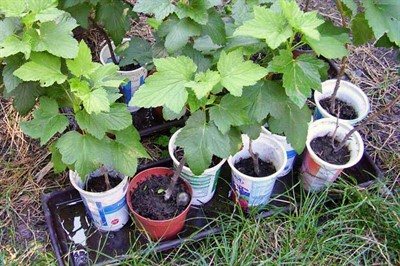

- You may not be guessing with the variety. The seedling may not take root.
- The root system can be affected by diseases
- The weather may be too cold for the seedling to survive.
- Financial component (good seedlings are not cheap).
Two-year-old bushes with three skeletal roots are chosen as seedlings. Before planting, you must make sure that the root system is in good condition. Plants are planted in prepared, fertilized soil. The roots are straightened and covered with soil.
Do not allow direct contact of the roots of the seedling with fertilizer, otherwise they will get burned... To prevent this from happening, fertilizers are sprinkled with earth from above.
The seedlings will take root faster, and the cuttings will take time to root. In choosing a propagation method, a compromise can be made: the cuttings should be buried in the ground in the fall, so that by the spring there will be ready-made planting material.
Selection of seedlings and cuttings
Choosing the right seedling is a guarantee that you will be able to grow a healthy, fertile bush. In this case, you should not listen to sellers who advertise their product as the best, you need to inspect the bush yourself in the most thorough way.
Important! To choose the right type of crop that you want to purchase (it can be black, white or red currant), lightly rub the shoot
—
if you smell a characteristic currant smell, then it is a black variety. Red and white currants do not emit aroma.The first thing you need to pay attention to is the root system, by which you can determine whether the shrub is healthy or not. Ask the seller to make a small incision - if there is a white-green "body" under it, then everything is in order, and if it is gray or brown, feel free to refuse the purchase.
Buy one- and two-year-old seedlings, but you should not take older ones. The bushes should have a good growth last year in the form of light shoots with live upper buds. If you notice that the growth is depleted, and its ends are dried, there is a high probability that the seedling is affected by powdery mildew. You shouldn't buy it.
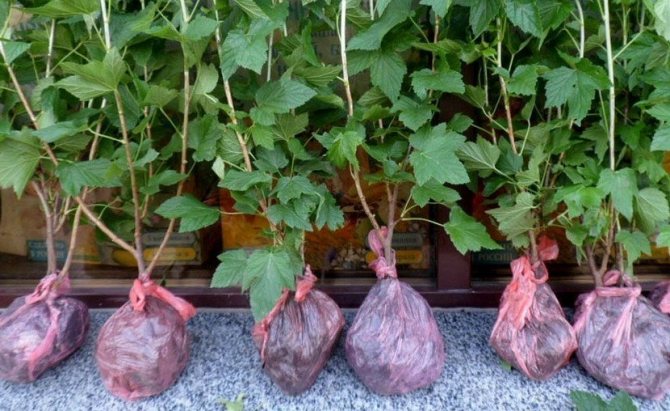

Also, be careful when buying a plant with deformed stem ends - such a sign may indicate aphid infestation. The presence of another harmful insect - the kidney mite - can be determined by the too large size of the kidneys. If you noticed this after the purchase, before planting, treat the plants with insecticides (Confidor Maxi, Aktara helps well).
Did you know? In addition to the fact that currants can be black, red and white, there are other varieties of it, for example, yellow, purple, orange. A variety grows in America, the berries of which have a black skin, but the pulp resembles a white gruel and is very sweet.
Experienced gardeners advise to "trim" the bushes before planting so that about 6-7 buds remain on each stem - everything else needs to be cut off. This procedure will help to avoid early aging of the bush. If this is not done, the foliage that appears in the spring will begin to "pull" juice from the long stems. And since the root system cannot yet work at full strength to supply the necessary substances, the branches will quickly begin to age and become bare.
In the fall, you can start propagating currants by cuttings, and it is equally important to collect suitable material. To do this, cut off several annual lignified shoots, at least 0.5 cm thick. Try to choose material without damage. Using a sharp knife, you need to cut them into cuttings 20–25 cm long (the extreme fragments - the lower and upper ones - should be discarded). The upper cut is made blunt, and the lower cut at an angle.Places of cuts are best treated with beeswax or garden varnish. After that, the cuttings can be planted in prepared soil (a mixture of peat and sand or sawdust, taken in equal parts), observing the top-bottom orientation.
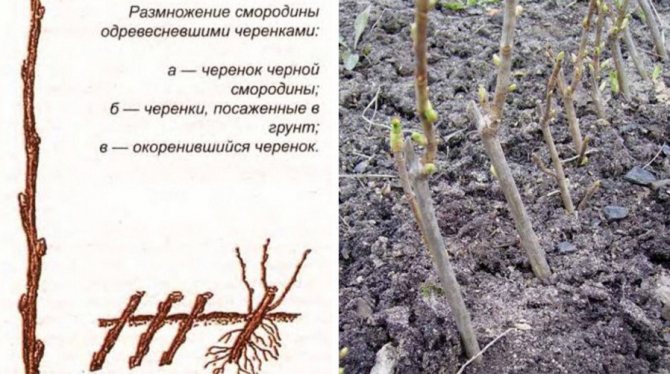

Rooting will begin in the spring when the melt water awakens planting.
When the bush begins to bear fruit
When do you plant currants?
SpringAutumn
The currant bush lives and bears fruit for up to 15 years.
Black currant, grown from a seedling, begins to yield the next year after planting, red and white - in the second year.
The yield of red grows annually and reaches its highest point at 5-6 years of its life cycle.
Fruiting black comes to its bloom even earlier - at the 4th year of life.
The main conditions for good plant growth and development:
- The sun
- Moisture
- Drainage
Varieties should be selected zoned, disease resistant. It is important to choose the right landing time. Then the currant will be a garden decoration for a long time.
Where to plant a seedling
When choosing a permanent location, the following parameters are taken into account:
- soil composition,
- a place,
- illumination,
- predecessors and neighbors.
Soil composition
Currant prefers fertile black soil, grows well and bears fruit on sandy loam or medium loamy soils. The soil can be improved to match the requirements of the bush. Organic matter is added to sandy loam, organic matter and mineral fertilizers are added to loamy. The acidic soil is limed. To do this, in the fall, when digging, slaked lime is introduced at the rate of 40 kg per hundred square meters. Moreover, it is important to know that excess lime is harmful to the soil. If the earth is not dug up, then local cultivation is carried out: they make wide planting holes and fill them with fertile soil with humus and add 200 g of ground limestone.
A place
For berries, areas that are lit and protected from the wind are preferable. Avoid areas where groundwater is more than one and a half meters from the soil surface. A leveled area or a gentle slope with a slope to the west or northwest is suitable for her. Lowlands are not suitable for black currants.
Illumination
Black currant is a light-loving plant. It can also grow in light partial shade. In this case, the berries will be larger than on the bushes growing in sunny areas, but noticeably sour in taste.
Predecessors and neighbors
To avoid contamination, the berry is not planted in areas previously occupied by raspberries, gooseberries or currants. The rest of the fruit, berry or vegetable crops can be good predecessors.
Avoid sea buckthorn, raspberries, gooseberries and cherries. The roots of the sea buckthorn spread out to 10 meters and are located shallowly, on the same level with the roots, so the sea buckthorn and currants will fight for moisture and nutrition. lina and cherry grow very quickly and drown out the bush. They have a common enemy with gooseberries, the gooseberry fire, so to prevent infection, it is better to plant the berries further away. Do not plant currants in the immediate vicinity of trees, especially pine or walnut. The fact is that the pine acidifies the soil. Walnut, on the other hand, inhibits all vegetation nearby.
It is good to plant several varieties side by side: inter-pollination increases productivity. Due to cross-pollination, the number of ovaries increases, and the berries become larger.
Black currant bush: planting and care, scheme, distance
The main rule when placing bushes on the site is simple: it is necessary to plant so that the plant is comfortable, and at the same time it is convenient to pick berries.
Currants need space. Remember that it should be separated from fruit trees by at least 2.5 m.When planting in rows, leave a row spacing of 2 to 3 meters, in a row, leave at least one and a half meters between the bushes. With a shorter distance, the bushes will interfere with each other, and the yield will noticeably decrease. In addition, the life expectancy of the bushes is also reduced.If you plan to plant currants along the fence, do not save space, step back one and a half to two meters from the fence.
Landing rules and scheme
Planting methods differ according to the amount of planting material:
- Solitary shrubs. They are used if there is a new specimen or a valuable species representative. Plants are planted at a distance of two meters.
- Rows. Such a scheme is used by breeders for gardening in a personal plot. The intermediate distance between plants is up to a meter. After a few years, the branches close up, forming a hedge. After five years, anti-aging procedures are performed.
- Dense rows. In terms of distance, the bushes reach half a meter or less. This method is used for industrial planting.
When choosing the optimal type of planting, in small areas, maximum fruiting is achieved with large volumes of harvest. Further care will be required to achieve sufficient light.
The location of seedlings on the site, the distance between the bushes
Seedlings are planted as follows:
- The landing pit prepared in advance is spilled with clean water.
- A small hill is formed on the bottom, where a young plant will be installed at an angle. This will allow the root system to form faster.
- The neck of the root is deepened by 10 cm. In spring, new shoots will appear from the buds, which are deepened into the ground, so that the shrub turns out to be more powerful, spreading.
- The roots are carefully spread out to distribute over the hill.
- The deepening is sprinkled with soil step by step, which was dug out during the preparation of the lanka. The earth is mixed with compost.
- The soil should be filled with water to fill the void. The young bush is shaken off a little.
- The ground around the plant is compacted.
- The culture is finally watered. It will take 20 liters per bucket of water.
- Planting material is cut at a height of 10-15 cm from the land plot to leave several small buds.
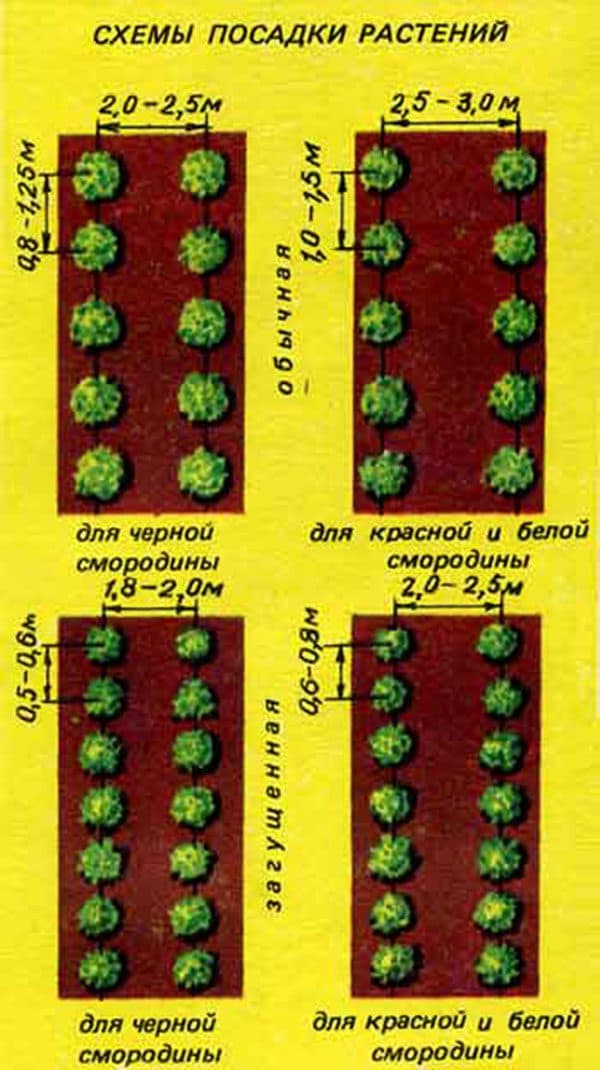

Further special care for the currants is not required. If the weather is dry, the shrub must be watered and mulching with peat or humus will be required. This helps to protect the roots from frost. Distance between seedlings
Depending on which type of landing is used, the distance is different. Black currant sits with a margin of space at a distance of one and a half meters. If it is a red plant species, the distance is allowed 1-1.25 meters.
Currant grafting
Blackcurrant grafting can be done in spring, summer and autumn. The most preferable summer grafting on a high stump. When grafted onto a stump, black currant is a stock. This method allows you to get a currant tree with berries of white, red, pink or black color.
Procedure for grafting on a high stump:
- The rootstock stems need to be cut into a high stump, the scion stalk should be prepared and combined with a simple copulation.


Copulation is the easiest way to vaccinate
- After the graft has taken root, the stock should be shortened and formed into a compact shrub.
- In order for the grafted shoots to yield a crop next summer, the root shoots of the current year must be completely removed.
Currant compatibility with other plants
Onions are a great neighbor for currants. If you plant onions next to currants in late autumn, an important task will be completed - spring protection of the kidneys from the kidney mite. The neighborhood with honeysuckle and apple is considered good for currants.
The situation is completely different with the planting of black currants in the vicinity of red currants. If these 2 species are planted side by side, then the yield of each will drop sharply. This phenomenon does not apply to golden currants, which perfectly coexist with black chokeberry.
Compatibility table of black currant with other plants
| Name | Good neighborhood | Bad neighborhood |
| Black currant | Apple tree, golden currant, honeysuckle, tomatoes, potatoes, onions, anise, parsley, tarragon, coriander, basil, garlic | Plum, sweet cherry, cherry, gooseberry, raspberry, red currant, buckthorn, bird cherry, sea buckthorn |
The same consequences are observed in the vicinity of raspberries, which need a spacious area. Due to the rapidly growing raspberry root system, which oppresses other plants, currant bushes begin to experience discomfort, moisture deficiency and lose vitality, which negatively affects its yield. For the same reason, cherries, plums and sweet cherries are other unwanted neighbors for currants.
Planting bushes next to buckthorn has an adverse effect, from which currants can become infected with goblet rust. Dangerous consequences for the currant have a neighborhood with the bird cherry, which attracts the attention of the glass - a pest of all fruit and berry crops, and with the gooseberry - because of the fire.
To prevent attacks of parasitic insects, it is recommended to plant spicy plants near the bush that will scare off pests with their pungent smell - anise, parsley, tarragon, coriander, basil, garlic.
Black currant, for its part, benefits crops such as tomatoes, potatoes, scaring away their pests with phytoncides.

